

How Big Are Yachts? 5 Types Explained (With Numbers)
Yachts can come in a variety of sizes and weights. Before you purchase a yacht, you must know what size yacht you need.
The size and weight of the yacht that you need will depend greatly on what your intended use is for the yacht that you are purchasing.
Table of Contents
Here’s everything you need to know about the weight of yachts:
Here’s an Idea of How Big Yachts Are:
The term “Yachts” refers to a pleasure vessel that is at least 30 feet in length and has some type of cabin with some amenities. The biggest luxury yacht is 590 feet (180 meters) and 13,136 gross tons.

What Do We Mean When We Talk About Weight?
There are two types of weight for a boat, dry weight, and wet weight.
Dry weight is the weight of the boat without any fluids in the tanks. Wet weight is the weight of the boat with the fluids in the tanks.
You can also have a loaded weight, which is the wet weight, including any additional toys or equipment you have stored onboard.
What Do We Mean When We Talk About Length?
There are many different ways to calculate a boat’s length. For this reason, you want to make sure that you have a clear idea of what the length of your boat really is.
The boat’s registered length is generally the maximum overall length, which is the length on deck plus any bowsprit or swim deck. The length of the boat on the waterline is also an important boat characteristic that you should know.
Due to the shape and construction of the hull, these numbers may differ.
For example, if you have a boat that has a 50-foot deck with no bowsprit, your registered length will be 50 feet.
Some boats are measured using “LOA,” otherwise known as length overall.
Why Is Knowing The Weight And Length Important?
The most important reason to know your boat’s weight and length is for when you choose to shop for trailers or even to determine if your vehicle can haul it.
If you try to tow a boat without an accurate representation of the weight or length, you can ruin your vehicle’s engine and even your towing equipment, not to mention have serious safety issues.
Another reason to know about your vessel’s weight is to know how much you can bring for your trip without packing more than the maximum weight allowed.
It is also important to know your weight and how it can affect your boat, especially when it comes to speed.
Different Types of Boats and Their Average Weight and Length
Below are some different types of boats and their average size and weight, and the factors that go into them.
1. Luxury Yacht

Yachts are normally classified as any watercraft that can be used for pleasure or sport and can range from 30 ft to over 100 ft.
While a yacht can be as small as 30 ft. long, a yacht is often considered a cabin cruiser until it is 39 ft. or more, then it is considered a proper yacht.
A yacht would be considered a large yacht once it’s length is over 79 feet. A yacht is considered a superyacht or megayacht if it is over 115 feet long.
The yacht the holds the record for being the longest yacht is 590 feet long. This yacht is called the “Azzam” and has held onto its title for over 5 years.
Because of the wide variety of sizes, the weight can vary greatly when it comes to yachts, and it is hard to nail down an average.
Some more distinctive differences between yachts include:
- These yachts are single-deck yachts with one living quarter below . They are often sleek and sporty.
- Also known as a sedan bridge or sport bridge yacht. This yacht has an area on top of the superstructure that features a view all the way around the vessel.
- This deck up top can offer a control station or even lounge seating, depending on its size.
- Also known as a pilothouse motor yacht, cockpit motor yacht, or sky lounge. This term can be used for any large recreational vessel that is motor powered.
- Usually, this means a multi-deck vessel similar to a flybridge but instead has a large interior deck.
- Often classified as a mega yacht, which is normally any vessel 80 ft. or more. This vessel is exactly what it sounds like.
- It is a yacht with three levels of enclosed living space.
- A sportfishing yacht is any yacht that is geared towards fishing.
- They often have areas designated to storage for rods, bait, tackle, and even areas to store the day’s catch.
2. Sailboats

Large sailboats are yachts propelled by sails and can be found in lakes, rivers, and even out on the ocean. Today, they almost all have auxiliary power in the form of an engine.
While the weight and length of a sailboat can drastically vary, the average weight of a sailboat is about 8,800 pounds. This weight does not include added gear, equipment, or fluids.
The weight will vary greatly depending on the length of the sailboat. Sailboat lengths can range between 8 feet to 472 feet.
The 472-foot sailboat also carries three masts that tower at over 91 feet each. This can definitely add more weight than the 8-foot vessel.
Listed below are 6 examples of sailboats and their weights and lengths:
- Catalina 16 LOA: 16 ft. 4 in. Hull Weight: 430 pounds
- Hunter 22 LOA: 21 ft. 4 in. Hull Weight: 3,200 pounds
- C&C 27 LOA: 27 ft. 4 in. Hull Weight: 5,180 pounds
- Erickson 28.5 LOA: 28 ft. 7 in. Hull Weight: 8,500 pounds
- Pearson 39 LOA: 39 ft. 3 in. Hull Weight: 17,000 pounds
- Swan 48 LOA: 47 ft. 11 in. Hull Weight: 36,000 pounds
3. Speed Boats (Cigarette Boats)

Speed boats are sleek and built for achieving high levels of speed.
These boats are not made for watersports and should not be confused with ski boats.
A speed boat’s average weight is slightly less than that of a sailboat at roughly 8,000 pounds.
Some of the factors that determine a speed boat’s weight can include their length, engines, and sleekness.
Listed below are some examples of speedboats and their weights and lengths:
- Cigarette 38 Top Gun LOA: 37 ft. 8 in. Hull Weight: 9,175 pounds
- 32 Thunder Cat LOA: 32 ft. Hull Weight: 5,400 pounds
- M35 LOA: 35 ft. 4 in. Hull Weight: 9,250 pounds
4. Deck Boats or Pontoon Boats

Deck boats and pontoon boats both have large decks and are mostly intended for recreational use.
Pontoon boats have the lowest average weight at 3,100 pounds .
Because they do not have large hulls, they can be lighter and cut across the water easier than boats with larger hulls.
Listed below are some examples of deck boats and their weights and lengths:
- NauticStar 211 Angler (Deckboat) LOA: 20 ft. 9 in. Weight: 2,100 pounds
- Stingray 212SC (Deckboat) LOA: 21 ft. 11 in. Weight: 3,100 pounds
- Hurricane SunDeck 2690 LOA: 26 ft. 4 in. Weight: 4,475 pounds
5. Cabin Cruisers

Cabin cruisers are large boats that are sometimes looked at as mini-yachts.
These boats allow for sleeping accommodations and other luxuries afforded in their cabin space.
Like the sailboat, a cabin cruiser’s weight can vary. However, they do tend to have a smaller range than sailboats.
The average weight of a cabin cruiser is about 8,700 pounds.
One of the major factors in the weight of cabin cruisers is the size of the sleeping accommodations below. Some models of cabin cruisers can even sleep up to 10 people.
Listed below are some examples of cabin cruisers and their weights and lengths:
- Larson 274 Cabrio LOA: 28 ft. Dry Weight: 6,001 pounds
- Rinker 301 Express Cruiser LOA: 32 ft. Dry Weight 7,640 pounds
- Bayliner 285 SB LOA: 28 ft. 9 in. Dry Weight: 8,056 pounds
Picking a Yacht:
Yachts can vary in a wide array of sizes, weights, styles, and even purposes.
You can race them, fish on them, and cruise around at an easy pace.
You can take a day trip or even take personal cruises that last days or weeks.
With ample deck and cabin space that offers activities, sunbathing, kitchens, lounges, and sleeping quarters, a yacht is often the most comfortable way to experience the open water.
To choose a yacht, you will want to know what type of yacht you are looking for and what you want to use it for.
You also want to make sure when picking a yacht; you make sure you keep the weight and length in mind to make sure you have a proper towing vehicle and trailer for your vessel.
Click to share...
At What Size Is a Boat Considered a Yacht? (Does Size Matter)
Boats and yachts—these terms are often used interchangeably by many, but ask any seasoned sailor or maritime enthusiast, and they’ll tell you there’s a significant distinction between the two. One of the most frequently asked questions by people considering buying a larger vessel is, “At what size is a boat considered a yacht?” This may seem like a simple question, but the answer involves more than just size. In this blog, we’ll explore what defines a yacht, the role size plays, and other key factors that differentiate yachts from regular boats.
What Defines a Yacht?
Before we delve into size specifics, it’s essential to understand what makes a yacht different from other types of boats. A yacht is generally considered a recreational vessel that is designed for luxury and comfort. Unlike commercial or industrial boats used for fishing, transportation, or working purposes, yachts are mainly used for leisure activities such as cruising, sailing, or even racing.
While the word “yacht” might conjure images of mega-million-dollar vessels, the term covers a wide range of boats, from smaller yachts used for day trips to superyachts that could almost resemble floating mansions.
Does Size Really Matter?
The short answer: Yes, but it’s not the only factor.
Generally speaking, a boat is considered a yacht once it reaches a certain size and fulfills particular design and use criteria. While there is no universal definition for yacht size, here’s a rough guide based on industry standards.
The Size Breakdown
- Small Yachts (30–40 feet) Boats in this size range are often the entry point to the yacht world. While these vessels might not be extravagant, they are typically outfitted with some level of luxury and are designed for personal enjoyment. Smaller yachts are often referred to as “day yachts” because they are typically used for short trips rather than extended cruising.
- Mid-Sized Yachts (40–80 feet) Boats in this category offer significantly more space and amenities. These yachts are typically equipped with multiple cabins, bathrooms (heads), and a galley (kitchen), making them suitable for extended cruising. At this size, they may also come with features like crew quarters, sophisticated navigation systems, and more powerful engines.
- Large Yachts (80–120 feet) Vessels in this size category are firmly in the “luxury” yacht domain. These yachts often come with multiple decks, dining areas, lounges, and outdoor spaces. Large yachts usually have professional crew members onboard, and they are designed for long-range cruising. When people picture a “yacht” in its most glamorous form, this size is often what they envision.
- Superyachts (120–200 feet) Superyachts represent the pinnacle of yacht design and luxury. These vessels are typically custom-built, feature state-of-the-art technology, and can cost tens to hundreds of millions of dollars. Superyachts are often managed by professional crews and may include lavish amenities such as swimming pools, helipads, gyms, and spas.
- Megayachts (200+ feet) Once a yacht surpasses 200 feet in length, it’s typically classified as a megayacht. These vessels can accommodate large parties, host extravagant events, and are sometimes even the size of small cruise ships. Megayachts are rare, often owned by the super-wealthy or available for charter at astronomical rates.
What Else Sets a Yacht Apart? It’s Not Just About Size.
While size plays a crucial role in distinguishing a yacht from a regular boat, other factors contribute to what makes a yacht a yacht:
- Purpose and Use Boats are generally designed for a specific purpose. Fishing boats, pontoon boats, and speedboats are made for distinct activities. Yachts, on the other hand, are crafted primarily for leisure and luxury. While some yachts may be equipped for fishing or racing, they are built with a focus on comfort, aesthetics, and entertainment.
- Design and Features Yachts are known for their superior craftsmanship. Whether they are sail-powered or motor-powered, yachts are typically constructed with high-quality materials, plush interiors, and luxurious amenities. A yacht might include multiple staterooms, expansive dining areas, sunbathing decks, swimming platforms, and high-end kitchens, known as galleys. These features make it stand apart from other types of boats, which are often more utilitarian.
- Crew and Maintenance Yachts, especially the larger ones, often require a crew for operation and maintenance. This could range from a single captain for smaller yachts to a full crew for superyachts and megayachts, including deckhands, engineers, chefs, and stewards. The level of service and expertise required for a yacht’s upkeep is much higher than that of a regular boat, adding to the prestige and cost of owning one.
- Cost The price of a vessel can also influence whether it’s considered a yacht. Even a 30-foot boat could qualify as a yacht if it has luxurious finishes and is priced much higher than standard boats of a similar size. For example, a sleek, custom-made 40-foot motor yacht could cost as much as—or more than—an 80-foot regular boat, thanks to its luxurious features, advanced technology, and superior build.
Sail vs. Motor Yachts: Does Size Differ?
One of the other questions to consider is whether there is a difference in size when it comes to sail yachts versus motor yachts.
- Sail Yachts: Typically, sailboats that are considered yachts start around 30 feet and can go up to 100 feet or more. However, due to their smaller reliance on mechanical propulsion, they tend to offer less interior space compared to motor yachts of a similar length.
- Motor Yachts: Motor-powered yachts generally offer more interior space and amenities due to their design. A motor yacht that is 40 feet or more is typically considered a luxury vessel, with more power and comfort for longer voyages.
Yacht vs. Boat: Final Thoughts on Size
So, at what size does a boat become a yacht? While size is a critical factor, it is not the only consideration. A vessel that’s 40 feet in length but designed for utility rather than luxury might not be considered a yacht. Conversely, a smaller vessel with high-end features and built for leisure could easily qualify as one.
In most cases, a boat becomes a yacht at around 30-40 feet, where luxury, design, and purpose all come together. Once you go beyond 80 feet, you’re definitely in yacht territory, and if you exceed 120 feet, you’re entering the realm of superyachts and megayachts.
Whether you’re dreaming of cruising the seas on a sleek motor yacht or exploring exotic destinations on a sail yacht, the important thing to remember is that while size matters, it’s the lifestyle, luxury, and purpose that ultimately define a yacht.
Conclusion: Does Size Matter?
Yes, size does matter, but it’s not the only factor. A yacht is more than just a large boat—it’s a symbol of luxury, comfort, and leisure. Whether you’re looking at a small day yacht or a superyacht designed for long-range cruising, the essence of a yacht lies in its design, purpose, and the experience it offers.
So, next time you’re out on the water or at a marina, you’ll have a better sense of whether that sleek vessel you’re admiring is a boat or a bona fide yacht.
Happy Boating!
Share At What Size Is a Boat Considered a Yacht? (Does Size Matter) with your friends and leave a comment below with your thoughts.
Read Are Bilge Keels Good for Ocean Crossings? until we meet in the next article.
Similar Posts

Boating Resources and Courses: A Comprehensive Guide
Boating is a popular and rewarding activity that combines the thrill of adventure with the tranquility of nature. Whether you’re a novice eager to learn the ropes or an experienced sailor looking to refine your skills, having access to the right resources and courses is crucial. This guide provides an in-depth look at various boating…
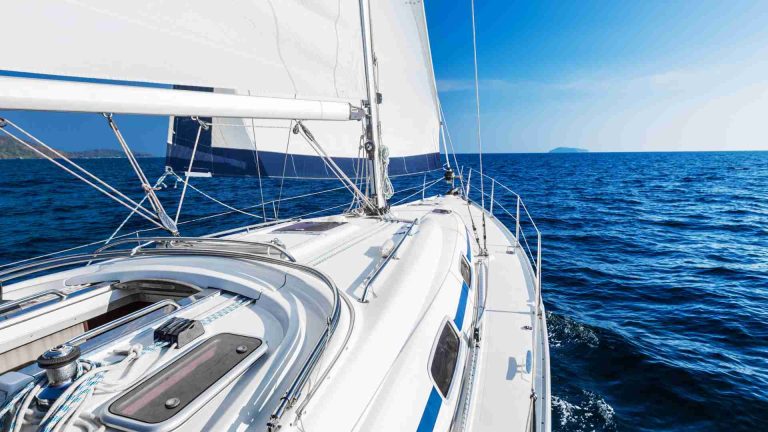
8 Differences Between Monohull and Catamaran Sailboats
There’s a certain magic to sailing, where the wind whispers ancient tales and the open sea beckons with promises of adventure. For those who’ve succumbed to its allure, the journey begins with a fundamental decision: the choice of the right sailboat. Among the constellation of options, none shines brighter than the decision between a monohull…

Are Bryant Boats Good & Reliable Enough to Own?
Bryant boats, with their sleek profiles and reputation for performance, often tempt both seasoned captains and recreational boaters seeking exciting adventures on the water. But before casting off with a Bryant, let’s navigate the choppy waters of reputation and reality, asking the crucial question: are Bryant boats good and reliable enough to own? Sunlit Shores…

How Do I Sell My Boat: A Comprehensive Guide
So, it’s time to part ways with your beloved boat. Maybe you’ve upgraded to a bigger vessel, your boating lifestyle has changed, or you’re simply ready for a new adventure. Whatever the reason, selling a boat requires careful planning and execution to ensure a smooth and successful transaction. This guide will navigate you through the…

Personal Watercraft (PWC) Safety Guide
Personal Watercraft (PWC), commonly known as jet skis, have gained immense popularity for their thrilling speed and agility on the water. While they provide endless fun, ensuring safety is paramount for both the rider and other water users. This comprehensive safety guide covers essential aspects of PWC safety, including equipment, riding techniques, legal requirements, and…

How Does Wind Affect Fishing? 7 Tips for Windy Fishing
Fishing can be an incredibly rewarding experience, offering both relaxation and excitement. However, seasoned anglers know that the weather, particularly wind, can significantly impact your success on the water. Wind can be both a friend and a foe, depending on how you adapt to it. In this article, we will explore how wind affects fishing…
At What Size Is a Boat Considered a Yacht? (Does Size Matter)
As a yacht enthusiast, it can be exciting to explore the numerous options available to you. Size does matter, but it is equally essential to consider the yacht's ability to entertain and its overall design. Ultimately, the perfect yacht for you is one that meets your personal preferences, budget, and unique needs, ensuring a memorable and enjoyable experience on the water.
In essence, a boat is typically considered a yacht when it reaches over 40 feet in length. However, size alone does not guarantee that a boat will be classified as a yacht. There are other factors at play, such as purpose, design, and the manufacturer's intention.
There is no specific cutoff size that distinguishes boats from yachts. Typically, a yacht is a private pleasure ship at least 40 feet long, while others consider boats over 80 feet to be yachts. It's also important to note that luxury and custom designs often separate yachts from standard boats. Let's examine these features below.
- The term boat commonly refers to smaller vessels or those under 40 feet.
- Yachts are generally 40 or 80 feet, depending on who you ask.
- There are various classifications of yachts, such as mega-yachts and super-yachts for those above 200 feet in length.
- Yachts are primarily designed for pleasure, recreation, and socializing, so size plays a key role in offering more advanced features, comfort, and space to accommodate groups.
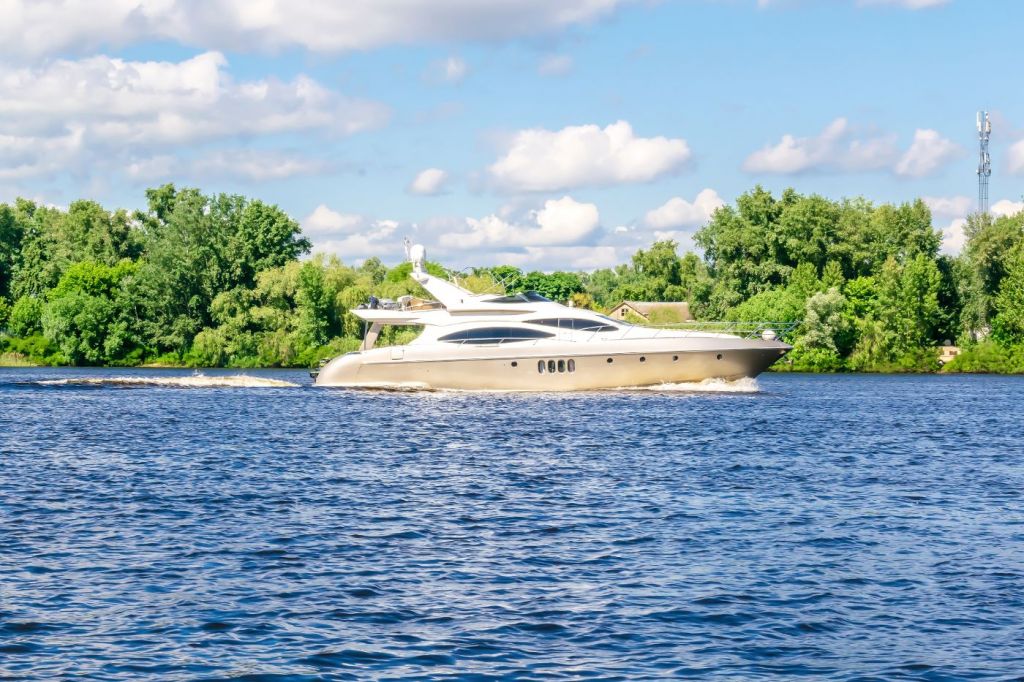
On this page:
Defining a boat and a yacht, does size matter in classifying a yacht, the impact of length on yacht classification, other factors influencing yacht classification.
A boat is a general term for various seafaring vessels, ranging from smaller personal watercraft to larger passenger crafts. Boats can be found in numerous shapes, sizes, and purposes, from fishing boats to speedboats. While there is no strict rule about the category a boat falls into, the term " boat " is commonly reserved for smaller vessels.
On the other hand, a yacht is considered a private pleasure ship, usually associated with luxury and leisure. Size is the most crucial factor when differentiating a boat from a yacht. Yachts are generally 40 feet or longer, although many people consider a boat to be a yacht when it reaches 80 feet in length. This distinction can vary between individuals and organizations, but it is widely accepted that yachts are larger than boats .
Though size is the primary factor in defining a yacht, other aspects play a role, including the vessel's purpose, design, and luxury amenities. The term " yacht " often implies a certain level of opulence, suggesting not just a boat for recreational purposes but also a symbol of status and wealth.

When you think about yachts, you might imagine luxurious and enormous vessels with elegant features. But, does size really matter when it comes to classifying a boat as a yacht? Let's explore this question.
The maritime definition of a yacht states that it should be a private pleasure ship of at least 33 feet in length. However, it's more common to consider boats in the 35–40 foot range as yachts. This suggests that size indeed plays a critical role in classifying a vessel as a yacht. Below are some examples:
Under 40 feet : If your vessel is less than 40 feet, it's more likely to be classified as a boat rather than a yacht. The distinction usually becomes clear at around 33 feet, with yachts typically starting at this length.
40–100 feet : This range represents the sweet spot at which your vessel would undoubtedly be considered a yacht . As your boat approaches 100 feet, it might even start to qualify as a medium yacht.
Over 100 feet : Once your vessel exceeds 100 feet in length, it officially enters the territory of large yachts . These luxurious vessels are designed for extended periods of time on the water and often come with a full crew to cater to your every need.
If you're wondering what yacht size requires a crew , here's our article to answer that.
Here are a few examples of individuals and organizations that have a clear size point of what they consider a yacht. However, it's worth noting that there is no universal definition of what constitutes a yacht, and the specific size ranges can vary depending on who you ask.
The International Yacht Brokers Association (IYBA) defines a yacht as any watercraft over 40 feet in length.
The United States Coast Guard (USCG) defines a yacht as any pleasure vessel over 26 feet in length.
The European Union (EU) defines a yacht as any pleasure vessel over 24 meters (approximately 78 feet) in length.
The Monaco Yacht Show, one of the world's largest yacht shows, defines a yacht as any vessel over 30 meters (approximately 98 feet) in length.
The Superyacht Builders Association (SYBAss) defines a superyacht as any vessel over 24 meters (approximately 78 feet) in length.
The International Superyacht Society (ISS) defines a megayacht as any vessel over 50 meters (approximately 164 feet) in length.
In this section, we'll explore the different classifications of yachts based on their length. When it comes to yacht sizes, there are a wide range of options to meet your preferences and needs. We'll discuss the various features and characteristics you can expect from yachts in each category.
Small yachts (under 80 feet)
These yachts are perfect for day trips, weekend getaways, and shorter excursions. They may have basic amenities, such as small cabins and limited storage space, and are more affordable and easier to maneuver compared to larger yachts. Some popular types include sailboats, speed boats, and cabin cruisers. Generally, these watercraft are considered boats rather than yachts due to their size, but they can still offer a great time on the water.
Are you thinking of buying a yacht? Here's the real cost of a 50-foot yacht .
Medium yachts (80–100 feet)
This size range is where the term "yacht" comes into play, as boats over 80 feet in length are typically considered yachts. These yachts provide more space and amenities than small yachts, making them suitable for multi-day trips and accommodating more passengers. They may have larger cabins, full kitchens, and more luxurious amenities, making them suitable for longer cruises and accommodating more passengers. Examples include sport fishing vessels, sailing yachts, and motor yachts.
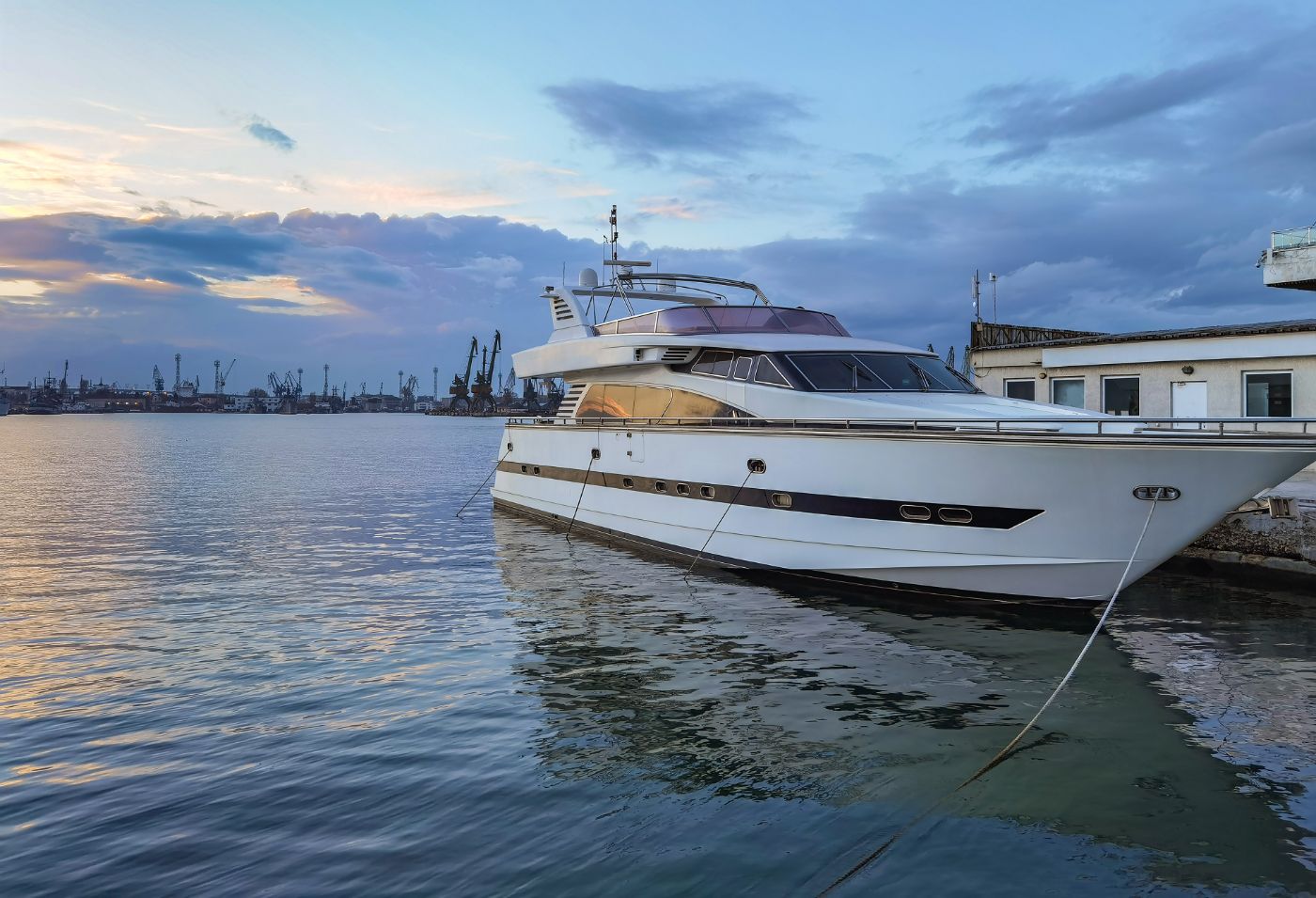
Large Yachts (100–200 feet)
Offering even more luxury and space, large yachts can accommodate numerous guests and host lavish events. With expansive living areas, multiple decks, and high-end amenities, these yachts are ideal for extended vacations or entertaining in style. Owners of yachts this size might opt for custom designs, full-time staff, and cutting-edge technology for added convenience and luxury.
Superyachts (200–300 feet)
At this size, yachts boast unrivaled opulence and grandeur, often featuring amenities like swimming pools, gyms, movie theaters, and helipads. Superyachts usually have a variety of water toys, such as jet skis, water skis, kayaks, and paddleboards, as well as tenders for shore excursions. These vessels typically require a professional crew and are designed for the ultimate luxury experience, accommodating extended stays and far-reaching destinations.
Have you ever wondered how long it takes to build a yacht ? Here's our article on the process.
Megayachts (300–500 feet)
They offer unparalleled luxury, craftsmanship, and performance, with multiple decks and ample living space to accommodate a large number of passengers and crew members. Megayachts are equipped with advanced navigation and communication systems, as well as high-speed internet and entertainment systems. Many megayachts are custom-designed to meet the owner's specific preferences and needs, with unique features and finishes.
Gigayachts (over 500 feet)
The world of gigayachts awaits; these behemoths of the sea are reserved for the elite few who can afford them. They represent the pinnacle of engineering, design, and opulence. With lengths over 500 feet, gigayachts are capable of hosting more than 100 guests and crew members. They often feature amenities such as multiple dining rooms, gyms, spas, and theaters. In this league, the sky's the limit when it comes to onboard experiences and extravagance.
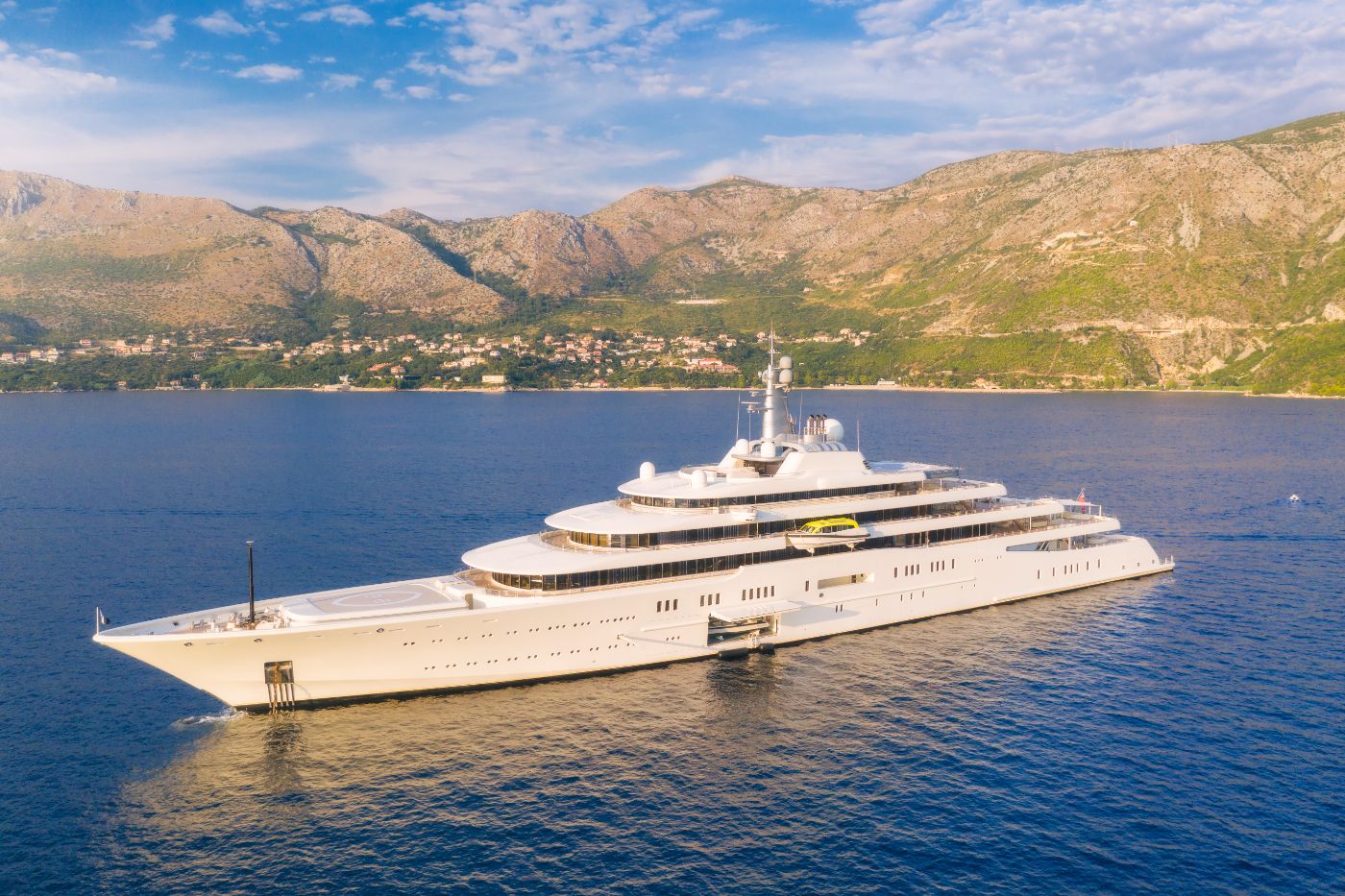
Besides size, there are additional factors that influence a boat's classification as a yacht. In this section, we'll explore these aspects, including amenities, construction quality, and price range.
Amenities in a yacht
When defining a yacht, the amenities it offers can be just as important as its size. A yacht typically provides luxurious features you won't find on an ordinary boat, such as high-end decor, spacious living areas, and state-of-the-art technology . As you explore various vessels, take note of the amenities they provide, such as gourmet kitchens, spa-like bathrooms, and lavish owner's suites . These features contribute to a boat's classification as a yacht, making the experience truly luxurious and comfortable for you and your guests.
Construction quality of a yacht
Another factor that can distinguish a yacht from a regular boat is its construction quality. Yachts are typically built using advanced materials and superior craftsmanship , ensuring the vessel's longevity and performance. As you examine potential yachts, pay attention to the materials used, the hull design, and the engineering behind the vessel.
High-quality yachts are often built by renowned shipyards and feature exceptional engineering by well-known designers. This ensures your yacht not only looks fantastic, but performs just as well on the water.
Price range
Finally, the price range of a boat can be an indicator of whether it should be considered a yacht. Yachts generally fall within a higher price range compared to ordinary boats, due in part to their size, amenities, and construction quality. As you narrow down your options, remember that a higher price tag can signify a greater level of luxury and sophistication, which can help determine if a boat is truly a yacht.
Do you plan to buy a small yacht? Here's the cost of buying and owning one . Keep in mind, though, that the price of a yacht can vary depending on various factors, such as age, brand, and customization options. So, don't rely solely on the price to guide your decision when choosing the perfect yacht for you.
Leave a comment
You may also like, what size yacht requires a crew (for different lengths).
While smaller yachts can be operated by a single person, larger yachts require a trained crew to operate them safely. Different types of yachts also have different …
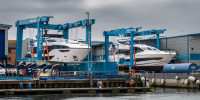
How Long Does It Take to Build a Yacht? (7 Types)
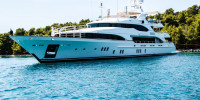
The Real Cost of Buying & Owning a 50-Foot Yacht

Cost of Buying & Owning a Small Yacht (Detailed Breakdown)

Average Cost of Buying & Owning a Yacht in Dubai (2023)
Boat Reviews
- Boats Specs
- Marine Pros
- Boat Insurance
- Boat Warranties
- Boat Transport
- Boat Towing
- Marine Forecasts

Your Ultimate Boating Resource

What is the minimum size for a boat to be considered a yacht?
When it comes to the size of your boat, the term “yacht” is often thrown around. But what actually constitutes a yacht? Is it simply a matter of size? Or are there other factors at play?
In general, a yacht is considered to be a luxury vessel used primarily for pleasure, whether that be cruising or racing. The term is often used interchangeably with “boat,” but there are some key differences between the two.
The most common definition of a yacht is that it is a vessel over 30 feet long. However, this can vary depending on who you ask. Some people consider any vessel over 40 feet in length to be a yacht, while others define the term more broadly to include any boat used for recreational purposes, no matter its size.
But size isn’t the only factor that determines whether a boat is a yacht or not. In addition to length, yachts are typically designed with certain features that make them more luxurious and comfortable than other vessels. These might include things like multiple decks, deluxe living quarters, and advanced navigation systems.
Another thing to keep in mind is that yachts are typically much more expensive than other types of boats. This is because they are designed and built to the highest standards of quality and luxury, and are often customized to the owner’s exact specifications.
So, while there is no hard and fast rule about the minimum size for a boat to be considered a yacht, the general consensus is that it should be at least 30 feet long and designed with luxury and comfort in mind. Anything smaller than that is simply a boat, no matter how nice it might be.
LEAVE A REPLY Cancel reply
Log in to leave a comment
Related Questions
What type of wood is used for pier pilings, what is the difference between a dock and a floating pier, what is the proper technique for pulling a beginner wakeboarder, what does ‘no wake’ mean on a lake, what is the difference between wash and wake, is wakesurfing possible in the sea, why don’t wooden piers rot, what size wakeboard is needed, how to achieve more pop on a wakeboard, does wake surfing translate to ocean surfing, latest posts, 2025 tiara yachts 34 ls review, 2025 sea ray boats slx 350 outboard review, 2025 regal boats 38 sav review, 2025 pursuit boats s 358 sport center console review, don't miss, our newsletter.
Get the latest boating tips, fishing resources and featured products in your email from BoatingWorld.com!
Overview of the 2024 Sea-Doo RXP-X 325
Overview of the 2024 parker offshore 2900 cc, what your boat’s beam is and why it matters, power cats of 2024: ultimate guide to the top power catamarans this year, navigating the heat: 10 safety tips for a safe boat ride in the summer heat, highs, lows, and tidal know-how: a deep dive into ocean currents, 10 essential tips for fishing near private property, the benefits of using a drift sock: guidance for anglers, lure fishing: secrets for imitating live bait and attracting fish, explore the untapped depths of america’s best bass fishing spots, outboard motor maintenance: tips for keeping your engine in top shape, the essential boat tool kit: tools every boater needs, diy boat building: 8 tips and tricks for building your own vessel, the art of miniature maritime craftsmanship: ship in a bottle, antifouling paints: a guide to keeping your boat shipshape, beginner’s guide to standup paddle boarding: tips and techniques, boating for fitness: how to stay active on the water, kayak safety: how to stay safe on the water, anchoring in a kayak or canoe: how to secure your small boat, 2025 pearl yachts 95 pearl review, 2025 monterey boats 385 ss review, 2025 jupiter 340 ls review, 2025 solace boats 30 hcs review, gear reviews, megabass oneten max lbo jerkbait review, fortress anchors fx-7 anchoring system review, fortress anchors fx-11 anchoring system review, fortress anchors commando anchor kit review, fortress anchors aluminum anchors review.
- Boating World
- Fishing World
Stay in touch
To be updated with all the latest news, offers and special announcements.
- Privacy Policy

What Size of a Boat Qualifies it as a Yacht?
Posted on Published: April 26, 2022 - Last updated: June 13, 2022

Yachts are the most common type of pleasure boat and are among the most expensive types of boats you can buy. But what exactly defines a yacht? There’s no strict legal definition, but yachts tend to be large and expensive, with luxury being their defining characteristic.
For this reason, there’s no set size that qualifies it as a yacht – they can range from 40 feet to well over 100 feet long.
Definition of a Yacht
A yacht is a very large, multi-million dollar ocean vessel that has an owner who wants to show it off. Yachts are long, luxurious boats owned by those with access to large amounts of money and who want something big to show for it.
A luxury yacht may be used for pleasure cruising, day sailing, or racing, but unlike most small ships which carry cargo and possibly some passengers, a true luxury vessel is privately owned by someone who uses it exclusively for his own enjoyment.
Most yachts are designed from scratch and there are shipyards that are especially geared toward building these expensive vessels.
Much care goes into selecting materials such as bronze or stainless steel because they will have to withstand harsh marine conditions over many years without losing their original luster.
Different Types of Yachts

Yachts are available in a range of sizes. Larger yachts can be up to hundreds of feet long. But none is too big or too small to qualify as a true yacht, which is what makes them so impressive.
Here are a few types of yachts you need to know about so that you sound more posh at the marina.
Related to: 11 Different Types of Yachts │ 84 Luxury Yacht Interiors: Bedroom, Galley and Salon Pictures
Powered Yacht
A powered yacht is really nothing more than a large, luxury sailboat that has an engine on board. Yachts are defined by their beam or width at their widest point.
A smaller vessel used for pleasure cruising that has engines is considered a motorboat—not to be confused with powerboats, which can be much smaller and still have engines.
Luxury yachts typically range from 98–295 feet, but anything over 147 feet could qualify as a yacht regardless of its propulsion method.
Sailing Yacht

The term sailing yacht can mean different things depending on where you are and what kind of ship you’re talking about. The largest sailing yachts, such as those that participate in long-distance races or travel through the oceans, tend to be between 90 and 100 feet in length.
These ships are still small by today’s standards but some, like The Maltese Falcon which once held King Constantine II of Greece on its decks, have seen celebrity guests in their time.
Though smaller than other ships like cruisers or freighters, sailing yachts are powerful crafts and boast amenities for every member of an extended crew.
Technically, anything more than 82 feet is considered to be a superyacht. However, most yachts that are referred to as superyachts are over 160 feet in length.
In fact, since 2000, over 90% of new custom-built superyachts have been in excess of 160 feet long. Superyachts typically have larger engines and higher speeds than other yachts due to their larger overall weight.

There’s no official measurement for what makes a vessel a megayacht, but you can use 320 feet and $20 million as rough guidelines. The term is often applied to yachts longer than 131 feet or with a price tag exceeding $20 million.
They usually have between six and 10 decks and they offer some serious luxuries—think helipads, hot tubs, spas, dance floors, staterooms with king-size beds, and swimming pools.
But despite their large size, megayachts are designed to travel at high speeds in open water; depending on your definition, they may be considered anything from a superyacht to an ocean liner.
Main Differences Between a Yacht and a Boat
Exterior and interior design.

A true yacht comes with both exterior and interior design considerations. Each material used in designing your exterior vessel will depend on its intended use, from steel for cruising around rivers and lakes to fiberglass for navigating coastal waters.
The hull, however, is what determines whether or not your vessel is considered a yacht. If it’s made from wood or fiberglass (plastic) rather than metal, your boat isn’t necessarily disqualified—but you won’t be setting sail on anything other than local waters.
A true yacht will be made from aluminum alloys (the same stuff aircraft are built out of) like carbon fiber (made famous by its extensive use in Formula One race cars). It’s an expensive material that’s lightweight and remarkably strong.
Luxury Amenities
With amenities like dance floors, movie theaters, swimming pools, and helicopter pads, yachts definitely live up to their name. The more bells and whistles you want on your new floating home, however, the more expensive it will be.
For example, an ocean-ready elevator can add $5 million to $10 million to your purchase price. A particularly luxurious or large yacht can cost between $20 million and $60 million . The largest yacht in 2022 based on interior volume is named Dilbar .
She is 511 feet long, has two helicopter pads, a gym, the largest swimming pool ever put on a yacht, a beauty salon, a sauna, and accommodation for 24 guests in 12 suites.

Like everything else in life, yachts are relative; what is large to one person may be small to another. The word yacht originally meant anything used for a specific purpose and has evolved into a small pleasure vessel that is used primarily for entertainment.
For example, someone could technically call their 18-foot skiff a yacht because it is used for recreational purposes.
However, most people would argue that something with a length of 18 feet does not qualify as an actual yacht because it’s too small to provide enough space for entertaining guests or accommodating several people at once.
Captain’s Quarters
A captain’s quarters can sometimes be found on yachts, and add additional comfort and space for any passenger. This area is where you will find state-of-the-art electronics and entertainment systems, while also enjoying your own private bathroom.
The captain’s quarters are typically reserved for VIP guests or special events. You’ll want to keep in mind that captain’s quarters are not found on all yachts. It really depends on what type of vessel you’re looking at and what the designer decided to put in.
Maintenance Costs
Yachts are notoriously expensive to maintain, especially considering they’re not likely to be earning you money.
While there are a number of factors that make up the cost of ownership, including port fees and storage, there are two elements that can increase costs: water quality and fuel prices.
Additionally, larger yachts use more diesel than smaller ones. Unless you’re buying new, where newer models tend to use less fuel for propulsion than older ones due to advances in technology.

From every angle, yachts are one of life’s crowning luxuries. They take us to places we can only dream of, giving people a sense of royalty when they look at it. The feeling is not just for guests but for owners too.
It makes you want to enjoy your own slice of life and be with friends at all times!
- PennState College of Information Sciences and Technology – 19th International HISWA Symposium on Yacht Design and Yacht Construction
- Robb Report – The First All-Carbon Superyacht Ever Built Could Be Yours for a Cool $30 Million
- Forbes – Fate of Russian Billionaire Alisher Usmanov’s Mega-Yacht In Germany Uncertain

Boats by Make
Boats by type.
- American Tugboats
- Boston Whaler
- Buddy Davis
- Burger Yachts
- Carolina Classic
- Carolina Skiff
- Catalina Yachts
- Chris Craft
- Correct Craft
- Couach Yachts
- Cranchi Yachts
- Crest Pontoon
- Deep Impact
- DeFever Cruisers
- Dufour Yachts
- Ferretti Yachts
- Grady White
- HydraSports
- Maritimo Yachts
- Mastercraft
- Midnight Express
- Monte Carlo
- Oyster Yachts
- Premier Pontoon
- Prestige Yachts
- Princess Yachts
- Sumerset Houseboats
- Sunseeker Yachts
- Sun Tracker
- Symbol Yachts
- Tiara Yachts
- Trinity Yachts
- Viking Yachts
- All Purpose Fishing
- Aluminum Fishing
- Bay Boats (Flat Boats)
- Bluewater Fishing
- Cabin Cruiser
- Canoe Kayak
- Center Console
- Classic Powerboats
- Classic Sailboats
- Convertible
- Cruiser Sail
- Cruiser/Racer
- Cruising (Power)
- Cuddy Cabins
- Cutter Sailboat
- Daysailer/Weekender
- Dual Console
- Express Cruiser
- Fish & Ski Boats
- Freshwater Fishing
- High Performance
- Inboard Ski/Wakeboard
- Ketch Sailboat
- Mega Yachts
- Motor Yacht/Cruiser
- Motorsailer
- Multi-Hull Power
- Multi-Hull Sailboat
- Personal Watercrafts
- Pontoon Boat
- Rigid Inflatable
- Runabout Boat
- Saltwater Fishing
- Sloop Sailboat
- Sport Fishing Boat
- Submersible Boat
- Tender Boat
- Trawler Boat
- Walkaround Boat
- Weekender Sailboat
- Yawl Sailboat

What Size Boat is Considered a Yacht?
How big does a boat have to be to be considered a yacht?
Boat purchasing can be a bit confusing if you are new to the market. There are various brands, types, and terminology which can quickly befuddle the boat seeker. One such term is the word “yacht”. In most instances, the term yacht gives a vibe of luxury and exclusiveness that other boats do not have. Yet, oftentimes one will find that boats which are not exceptionally large have the title of Yacht attached to them. Does this mean that they are not yachts, or does it mean that the term Yacht is a bit subjective? Neither. The size of the boat as well as the style in which it is constructed determines if it is a yacht or just a boat. What Size Boat is considered a Yacht? This article will tell you.
The Length of a Yacht
Yachts are typically considered to be vessels which are longer than 30 feet. In most instances, boats which are smaller than 30 feet have the outboard motors and are usually single to double engine configured. These size vessels are properly called luxury craft, not yachts. Boats which would fall into the category of the luxury craft would include the cabin cruisers, double console boats, and many of the single decked sports cruiser boats.
The length of the boat does not determine the title in itself. Yes, the larger and more expensive the boat is, the more apt it will be to be dubbed a yacht. But, for example, if you were to purchase a 35 foot walkaround boat, it would not be considered a yacht by mariners. On the other hand, a 60’ HydraSport would be considered a Yacht. If you were to purchase a 100 foot vessel or larger, it would be considered a super-yacht.
It is more than the horizontal, it’s the vertical as well?
When considering the size of the boat, the L.O.A does play into the overall terminology. Also, the horizontal size, more specifically the cabin, decks, and the hardtops, contribute to whether or not a boat is considered a yacht. As the yacht is known for being a luxurious vessel capable of sailing from one port to another. The boat must have a means of accommodating such travels. Boats which do not have a cabin space are not, technically, Yachts but luxury cruisers or luxury boats. Boats with a cabin which are over 36’ are usually considered miniature yachts. Once a boat exceeds the 45’ mark and has the cabin or multi-deck configuration, are they considered to be full yachts. Boats over the 100’ mark, as stated earlier are super-yachts.
Does the size of the motor matter?
The size of a Yacht does not have a great deal to do with the engine power or configuration. Granted, most serious mariners do not consider outboard engines to be yachts, but rather to be luxury vessels if they are in anything less than a tri or quad configuration. Inboard motors are almost always considered to be a yacht as the size to accommodate such motors are typically larger than the 35’-45’ range.
The motor size has been debated and is still a grey area when it comes to the classification of a boat being either a yacht or a luxury craft.
What really defines a Yacht?
While the size and the power are considerations, the yacht is defined by its luxuriousness. This means that the attitude of the boat, the materials used, the function of the boat, and its uniqueness all play into its title. Yachts are the boats which have a function on the water, but also demand attention on the water. They are not the run of the mill boats, but rather the elite.
Where can I find a Yacht for sale?
Finding a Yacht for Sale is easier than you may think. Pre-owned vessels from yacht owners are offered on Vessel Vendor. Our site is catered to pre-owned boats from owners who are boat enthusiasts to qualified purchasers. Looking for a model? Not a problem. Our site offers you the ability to seek out brands, models, manufacturers, and even to search for boats by location (which will be a consideration if you purchase a boat which can not be towed down the highway).
Looking to sell? Great! Our site offers an intuitive means of listing your Yacht. Additionally, we have several pages dedicated to ensuring that your Yacht listing reaches the most potential buyers.
Should you wish to find out more about Yachts for sale, or if you have a Yacht for sale that you wish to list with vessel vendor , please fill out the appropriate form on our site and we will get back to you as soon as possible. We look forward to hearing from you soon, and welcome to the vessel vendor family.

Vessel Vendor is the best solution for buying a boat online. Our website connects qualified boat buyers with private boat sellers and co-brokerage listings to allow for the high visibility of available boats for sale on the market. Our brokerage firm and advanced website makes finding the your dream boat at an affordable price easy.
Help & Support
Top boat brands, subscribe to our newsletter.
ALL RIGHTS RESERVED. 2023. VESSEL VENDOR.
Disclaimer: The Company offers the details of this vessel in good faith but cannot guarantee or warrant the accuracy of this information nor warrant the condition of the vessel. A buyer should instruct his agents, or his surveyors, to investigate such details as the buyer desires validated. This vessel is offered subject to prior sale, price change, or withdrawal without notice.
Mechanical Disclaimer: Engine hours are as of the date of the original listing and are a representation of what the listing broker is told by the owner and/or the actual reading of the engine hour meters. The broker cannot guarantee the true hours. It is the responsibility of the purchaser and/or his agent to verify engine hours, warranties implied or otherwise, and major overhauls, as well as all other representations noted on the listing brochure.
Website Disclaimer: Vessel Vendor is an entity owned by Marine Sales and Charters, LLC – a licensed, bonded, and insured Employing Yacht Brokerage Firm.
Login or Register for website
- Reset Password

Interested In Learning More?
Save search, delete selected items.

Ship Gadgets
Enrich your shopping list wisely.
What Size Boat Is Considered a Yacht?
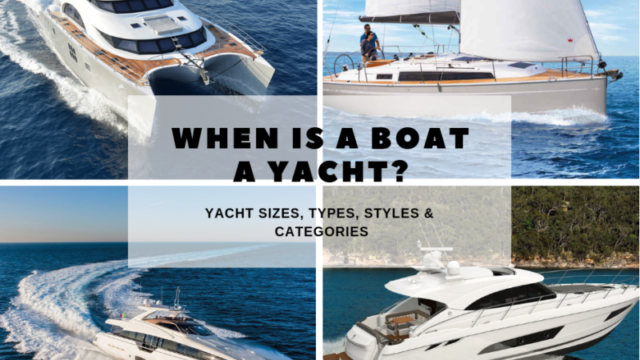
Over the past few hundred years, yachts have evolved to be synonymous with luxury and big money. Owning such a beautiful vessel has become an effortless way to communicate financial success and status. If you’re looking to buy a yacht or wondering if your current boat qualifies as a yacht, we’ve got you covered. However, while some yachts may be accurately called yachts, not all yachts can be considered yachts. So, when does a boat become a yacht? What is the difference between a boat and a yacht?
Table of Contents
A Yacht Definition
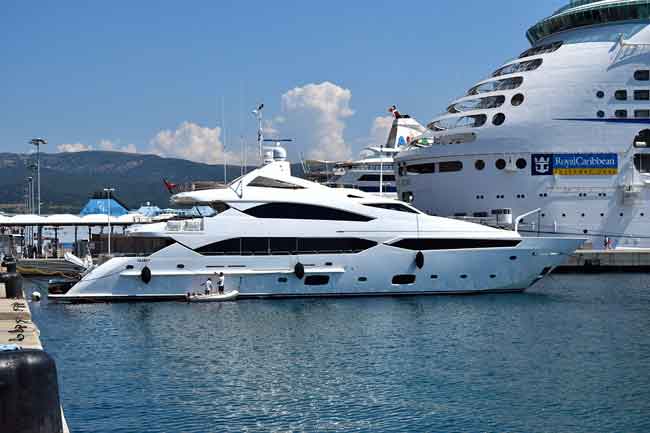
Yachting has no precise definition. So, how do we know “when does a boat count as a yacht?” It all comes down to intent. Almost all of the time, the designer of a boat chooses whether the boat meets the requirements of a yacht.
Yachts are the most popular luxury leisure boats. Buying a yacht is indeed a fancy hobby, and the typical deals on yachts are quite extravagant. The yacht is equipped with lounges, restaurants, bars, private suites, and dormitories.
It’s almost like your hotel on the water, although it maneuvers like a high-performance speedboat. In addition to these traditional amenities, yachts may have more spectacular features, including swimming pools and sports areas.
As already mentioned, another distinguishing feature of the yacht is its excellent performance, which can be explained by its powerful engine or its huge sails. Most of the recognized characteristics of yachts indicate that they must have a specific amount of storage and be built to a given size.
Yacht Size Definitions
While there is no officially defined range of terms to describe the increasing number of yachts released each year, the following terms broadly include the following sizes:
- Superyachts: usually start at 37 meters (120 feet) from bow to stern and can travel up to 60 meters (200 feet).
- Superyacht: Although it is often used interchangeably with a superyacht, it can also be used to describe any yacht between 60 meters (200 feet) and 90 meters (300 feet).
- Gigayacht: used to describe any yacht over 90 meters (300 feet) from bow to stern.
That said, these terms seem to be constantly evolving, and we may see changes in how they are used in the coming years.
Differences Between a Boat and a Yacht
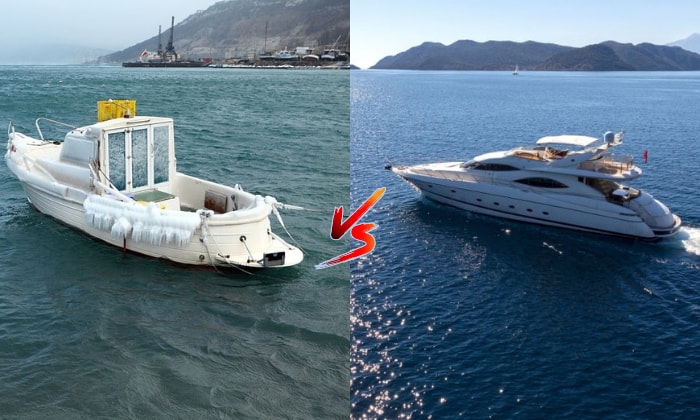
The only way to tell the difference between a yacht and a watercraft is to study their differences. So, in this part of the article, we’ll list the different characteristics that are present in each type of boat so that you don’t get confused when choosing a yacht and boat!
Here are the main differences between yachts and boats that you can easily identify:
- 1. Capacity
In terms of design, boats and yachts are very similar. None of them require any crew and can even sail alone. The main difference between boats and yachts is passenger capacity, a yacht can carry up to 8 people. So if you come across a large boat with more than 5 sailors on board, it’s probably a yacht cruising.
- 2. Measurement
There is no minimum size for boats, but they are usually 15 to 30 feet long. While there is no real size limit and no need for a boat, as long as it entertains people, it can be considered a yacht. The yacht is expected to be at least 10 meters or 33 feet long to provide enough space for the performance and comfort required by the yacht.
Another notable difference between boats and yachts is the way they are used. The boat is a broad term that includes a variety of boats used for commercial and non-commercial purposes. This broad phrase includes canoes, fishing boats, rowboats, and tugboats.
At the same time, yachts are really just recreational vehicles for personal entertainment. Even charter boats, which are the only exception to the trend, are designed for extravagant excursions.
Another subtle difference between a ship and a yacht is the location of its intended use. Boats are more common in inland waterways, including rivers or lakes. While some commercial fishing vessels are built for offshore operations, most private fishing vessels are rarely far from shore.
As we mentioned earlier, superyacht and superyacht are phrases that define the size range of such boats but are usually not required. The question of whether the boat is purchased for commercial or personal purposes is often the most critical.
- 4. Convenience facilities
Ships are transporting ships. The amenities they carry depend on what they need to accomplish their mission.
On the other hand, yachts have to transport more passengers. To be used as a recreational vehicle, most of the yacht’s amenities should be installed for recreation. So it’s no surprise that you’ll come across a yacht with a half-sized swimming pool, heliport, or small theater. Luxury is the original characteristic that distinguishes yachts from boats.
The visual contrast between the yacht and the boat is undoubtedly the most striking. Yachts are often defined by sleek lines, a feeling of royal composure, and a touch of luxury. Boats can be anything from luxury speedboats to ancient canoes.
The length at which a boat becomes a yacht is also debated. However, as a generally accepted guideline, the size of a boat is considered a yacht, usually starting from 9 meters or 30 feet LOA (length overall). However, when it comes to yachts, what makes them superior to boats is often elegance and style, which is arguably more important than size or length.
If a smaller boat exhibits proper expense and balance, then it can be called a yacht.
Typically, yachts are also non-commercial vessels used for private recreation and leisure. The only exception is charter yachts.
When a boat reaches a certain size, it can become a yacht – check out this giant ship in Hong Kong!
Charter yachts are luxury vessels available for charter that have been fully operated by professional crews. While technically commercial ships, they were meant to allow those who could afford to flee indulgently.
What size boat is considered a yacht, or when does a boat become a yacht? After reading this article, it’s clear that it all depends on luxury. Even without the proper definition of a yacht, you should now have a better understanding of what a search is. We hope the above information will help you and your crew purchase a yacht reasonably and make your cruising experience with your family and friends safer!
Leave a Reply Cancel reply
Your email address will not be published. Required fields are marked *
Save my name, email, and website in this browser for the next time I comment.
When Does a Boat Become a Yacht or Superyacht? (Sizes)
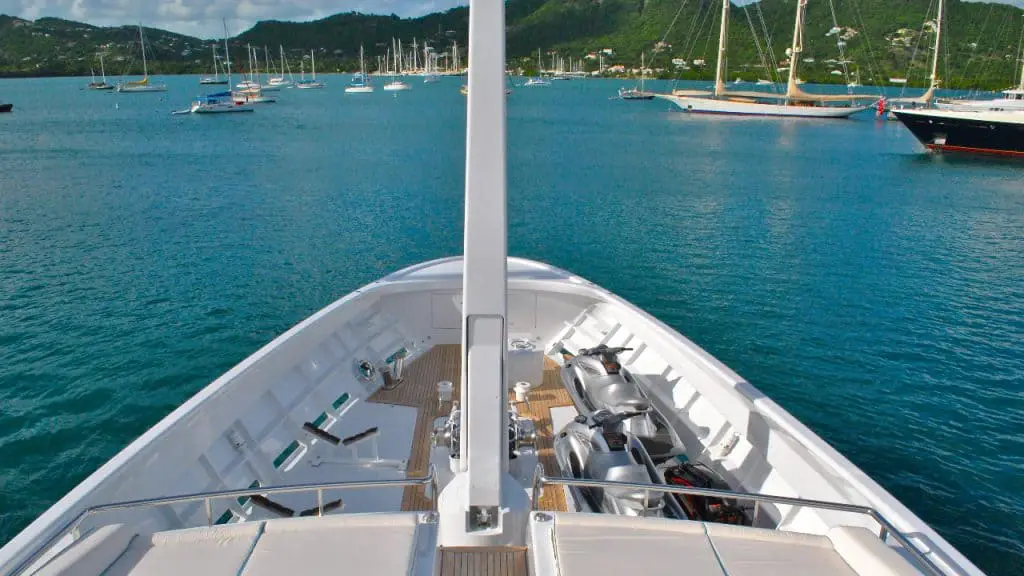
Yachting is the epitome of watertop luxury. Designed as one of the most sophisticated and comfortable vessels out there, the yacht seems come fully equipped with all the amenities you could ever hope for on a boat - and much more. In fact, some yachts can have tennis courts, helipads, and even full sized swimming pools, which means these boats can get crazy big.
Today, the yacht comes in a range of sizes, which is why some of them have been given the designation 'superyacht'. But when does a boat become a yacht, and when is it a superyacht? Here's what you need to know about this boat and its sizes.
What Size is Called a Yacht?
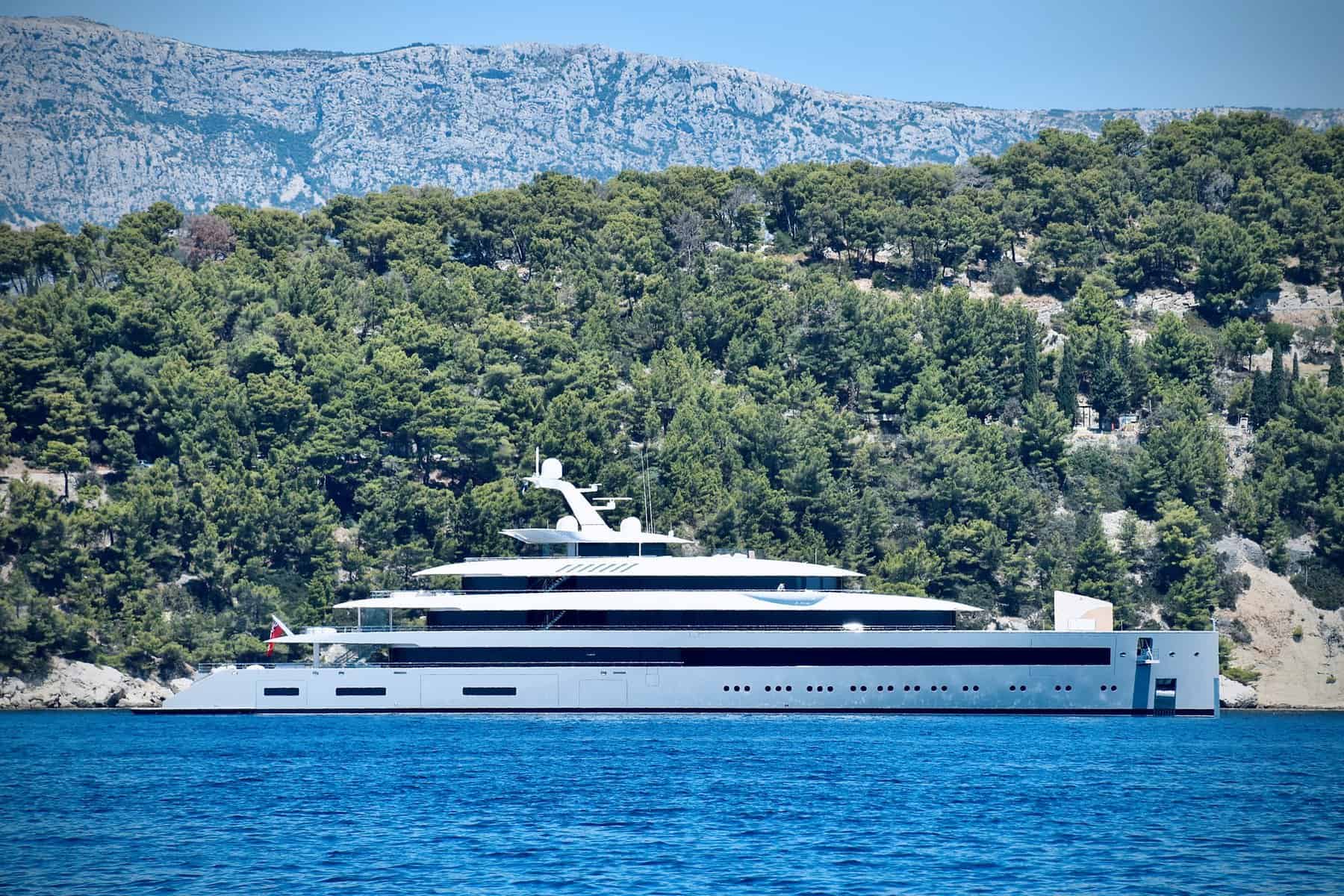
Just for the sake of information, we're going to go ahead and define what a yacht is first. The term yacht actually has its origins in the Dutch word jaght - a word that means 'hunter'. They used to call it such because these vessels were originally used to chase and catch pirate boats at the time. So the sporty marine vessel had to be quick to move.
But in the 1660's, the Dutch yacht was used to transport royalty, which changed people's perception of the boat from a sporty pirate-catching vessel to a means for important people to travel.
These days though, the definition of what a yacht is versus a boat can be pretty blurry. In fact, there is no standard definition on what can be called a yacht. So a yacht is any boat that has a cabin and facilities that can accommodate overnight use.
In terms of sizes, the yacht comes in a wide range. Size categories include:
Craft or Cruiser
This is a term used to describe any basic vessel less than 12 meters or 39 feet long, with a cabin and overnight amenities. The smallest are typically 35-foot personal yachts, and the look like a sailboat.
The term yacht refers to a vessel between 13 meters and 24 meters in length (78 feet.)
The superyacht is defined as a vessel 24 meters to 85 meters in length (278 feet.)
The superyacht and megayacht terms are often used interchangeably because they mean the same thing. Sources argue that the superyacht is the British term to describe a boat or ship 24 meters to 85 meters in length, while the other is the American term for a yacht of the same length.
For reference, the biggest yacht in the world measures 222 meters or 728 feet long. This places it in the category of giga yacht. Regardless of size, the yacht is what an owner would describe as a leisure marine vessel.
Boat vs Motor Yacht - What's the Difference?
Again, there is no standard definition of what a yacht is. So some people tend to think that you can call any old boat a yacht. But there are some characteristics that are more typically associated with yachts and that set them apart from other boat types.
Generally speaking, the word yacht is used to describe a floating vessel bigger than any other recreational or luxury boat . They typically have more extensive length overall. But it pays to know that there isn't a specific line that would argue specific boat sizes as yachts or not's. On average however, boat models tend to measure 30 feet and below while yachts typically start at about 35 feet.
Viable Conditions
Most boat designs are intended for calm inland waterways where they can navigate and operate without putting the crew at risk of danger . Bigger boats, usually up to 30 feet in size, should be able to operate in slightly rougher open waters for a short period of time.
But yachts with their supreme technology, comfort features, and varied power mechanisms can sail easily in deeper ocean waters with strong wind and waves. That's why yachts are the watercraft of choice for owners who want to enjoy long excursions across great distances.
It's standard for a yacht to have a cabin where passengers can sleep. They also have bathrooms since they're designed for long voyages. Depending on the size of the yacht, they can also come with a wide range of other pleasure features on board, including but not limited to dining halls, full sized kitchens, gyms, pools, tennis courts, and theaters to name a few. Superyachts and mega yachts can even have helipads so passengers can visit remote islands.
Essentially, the yacht is designed to provide passengers a hotel experience, but on water. The unique environment means that those who ride the massive ships can enjoy a combination of the great outdoors and lavish comfort on board. Commercial yachts of significant size can pack any variety of facilities, including various courts for different sporting events like tennis, basketball, and even golf.
Propulsion - Motor Yachts and Sails
The yacht could be propelled by either sails and wind or by an inboard or outboard motor, which is common with many other boat types. On any other boat, an engine should be able to produce sufficient power and speed on the waves, cutting through choppy water without a hitch.
However motor yacht engines tend to be superior in terms of power. These supersized engines produce supreme propulsion, generating as much as 800hp for some of the biggest motor yachts in the biz. They're also designed so that they don't wear out quite as quickly, so yachts can travel for longer periods of time. In fact, yachts that ditch the sails for motors because of their size are no longer considered boats, but ships .
Navigational Technology
Boat buyers have the option to add high tech navigational instruments to their boat, but it's sort of a requirement if you're buying a yacht. Since yachting can involve long, even trans oceanic voyages, it's important that they're equipped with the latest technology for navigating the waters.
These instruments work to provide precise positioning information which is especially important when traveling long stretches of open ocean or sea. Other than that, these high tech devices also make sure that the yacht has sufficient information on the water and weather conditions at sea, as well as any traffic or boat obstructions in their way so it could sail without a hitch.
Aesthetics and Comfort
Luxury isn't a quality that's originally exclusive to the yacht since there are tons of other boat designs out there that boast luxurious, sophisticated aesthetics and interiors. But the yacht definitely pushes the envelope, with even the most basic yacht touting premier facilities on deck.
These leisure boats use the finest materials for their seats, with some even touting genuine leather upholstery for the added comfort. With the style of a lavish mansion, yachts are floating hotels giving its passengers the ultimate luxury boating experience that combines both modern sophistication and comfort.
Yachts are expensive , no doubt. While you might be able to get your hands on a top-of-the-line boat with a couple hundred thousand dollars, yachts cost several hundred millions if you're looking into premier yacht territory.
In fact, some of the most expensive yachts cost way over a billion dollars, making them available only to the super rich. Nonetheless, those who want the yacht experience have the option to rent them out from their owners. It's still not going to be cheap though.
What are Superyachts, Megayachts, and Gigayachts?
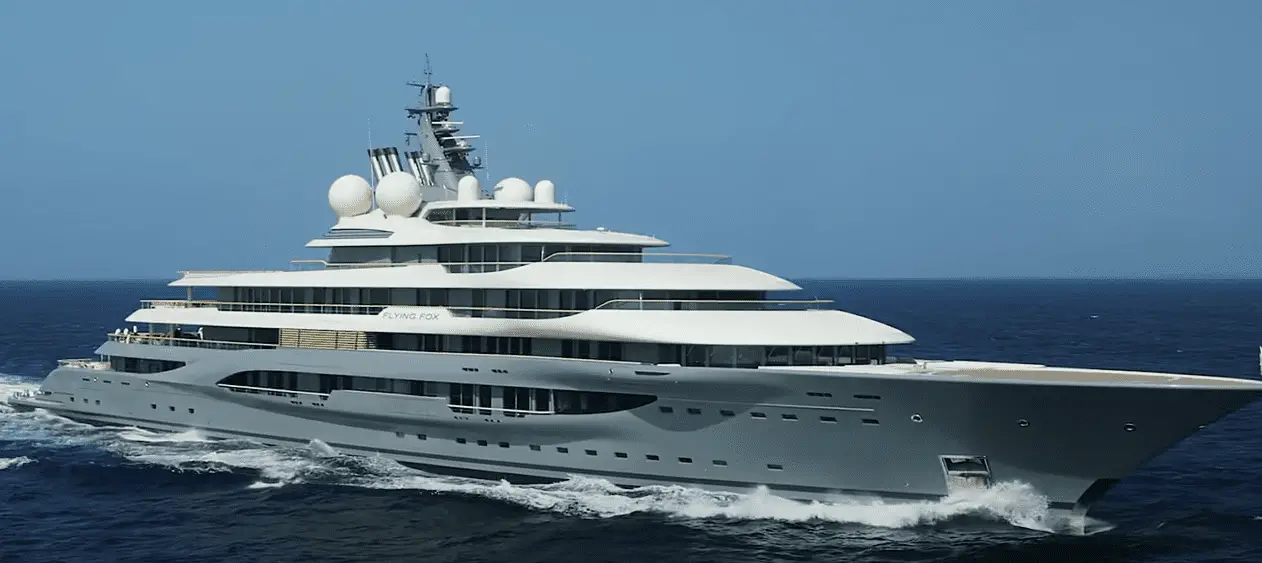
Now that we know what boat can be called a yacht, it's time to get into categories. The size of a yacht tells you which specific category it falls into. Again, there are no hard lines that separate categories. So it's sometimes a matter of opinion, but boat experts do agree on some of the size boundaries for different kinds of yachts.
The superyacht , also called a megayacht (depending on where you're from) is any yacht that measures 24 meters to 85 meters. Some yacht owner sources say that superyachts are yachts that measure 40 meters or more. It's not common to see yachts this size being propelled by sails since their weight could require unrealistically strong wind to push them forward.
A yacht exceeding 85 meters is what you would call a gigayacht , with most of them measuring between 300 feet to 400 feet in length. They have the most extensive length overall compared to any other kind of yacht. They can cost anywhere from $200 million to upwards of a billion bucks, making them some of the most expensive recreational luxury vessels around.
To be called a superyacht, megayacht, or gigayacht, the vessel must have sophisticated aesthetic and leisure qualities that surpass the comfort and appearance of other boats. They should also have staterooms or cabins for passengers to rest after a long day of fun and adventure. Propulsion is done by way of powerful motors in place of sails, officially designating them as ships, not boats.
Remember though that once a yacht reaches 22 meters (the measure of a 72-foot boat), it's required that you get a crew to operate (for more on this see our guide: what size yacht requires a crew and captain ) . That's because there's a lot that goes on when you're managing a large vessel. Without a captain and other professionals on deck, owners might struggle to safely operate the large vessel.
Yacht charters can have a crew that includes just around six people. But then again, yachts in the superyacht territory might have as many as 20 members on deck. A gigayacht can have as many as 92 crewmates on deck to cater to the needs of all the passengers and to make sure that the boat runs as smoothly as possible. This includes stewards and stewardesses that work directly with guests, and engineers who take the background roll of seeing that all the ship's machinery is in good working condition.
Types of Yachts
There are various types of yachts on the market that cater to different yachting preferences. Choosing the right one depends on what kind of activities you're hoping to enjoy while you're out on the waves. Here are some of the most common types of yachts:
Sport Fishing Yachts
Typically used in coastal waters, sportfishing sailing yachts usually come with livewells, rod holders, and spacious forward decks like other fishing boats that let you move around as you attempt to lure in your target. They can also be used for racing.
Luxury Yachts
For the record, the word 'luxury' can precede any type of yacht boat. For instance, there are sportfishing and luxury sportfishing yachts. The term simply aims to designate a yacht as designed with finishes and features that give it more class than other yacht models, so they can be more of a pleasure to use. Some boat owners soup up a fancy yacht and use it for racing.
The weekender is a small type of boat that's easy to maneuver, capable of accommodating a small crew, and perfect for weekend sailing excursions. They're fitted with sails or a small motor. These vessels are not powerful or anything like that, but it does make the ideal little boat for a quick overnight trip with a close friend or two.
Expedition or Explorer Yacht
These vessels are designed so that they can accommodate large numbers of passengers over long distances. The massive ship can enable people to travel to remote areas of the world and exotic islands that might not be reached by commercial flights. Owners are usually corporations in the cruise business, so you won't find one that's for private or personal use.
Boating in the Lap of Luxury
When does a boat become a yacht? A superyacht? Megayacht? Or a gigayacht? Well, it's all about the size. Yachting offers the most luxurious floating experience you might ever have on the open water, which is what makes them so enticing for people looking for a new way to enjoy the water. Complete with all the facilities of a five star hotel, these boats redefine what it means to rest and relax on the waves.
Related Posts

Captain Sandy Age: How Old is Captain Sandy Yawn?

Do Yachts Have Air Conditioning? (Yacht AC Types)
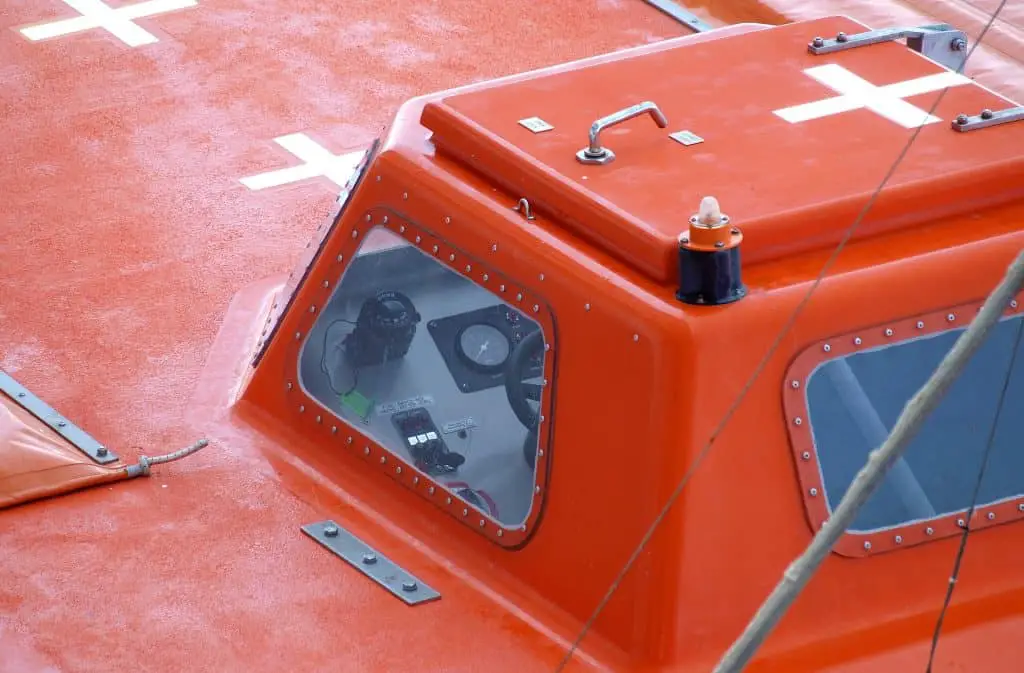
Do Yachts Have Lifeboats? [The Complete Answer]
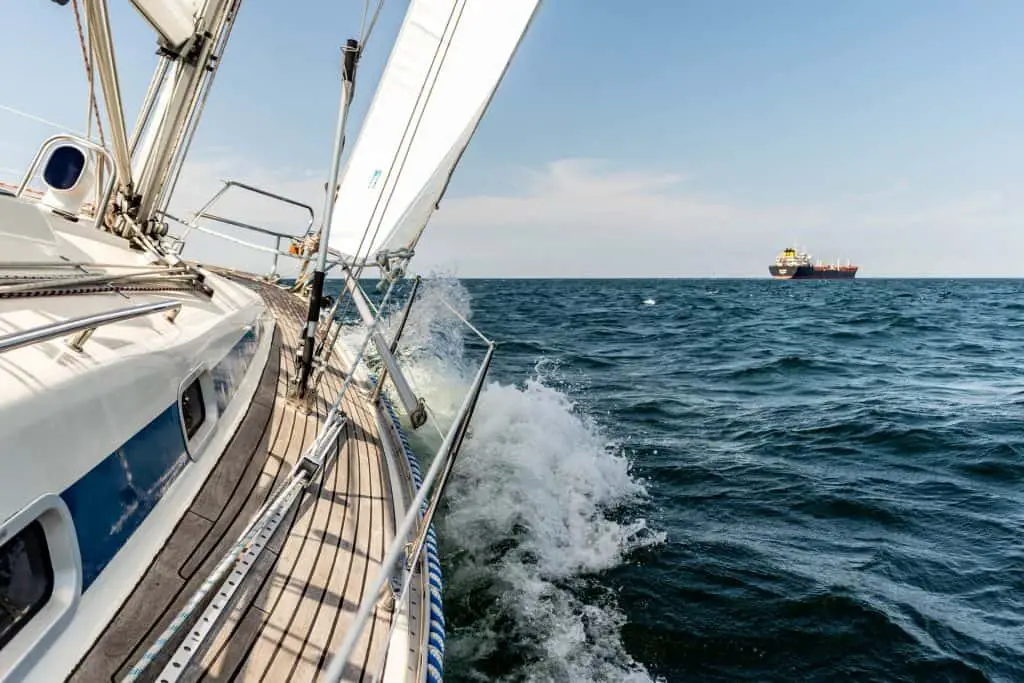
How Long Does It Take to Learn to Sail a Yacht? (How to sail)
- Office : (772)-217-6124
- Cell : (754)-367-3768
- Email : [email protected]

- Yacht Management
- Yacht Delivery
- Yacht Crew Placement
- Yacht Charters
- Yacht Provisioning
- Yacht Restorations
- Yacht Maintenance Contracts
- Yacht General Repairs
- Yacht Electrical Installation
- Yacht Re Power
- Yacht Emergency Response
- Yacht Financial Administration
- Yacht Technical Support
- Yacht 100 hour Service
- Yacht Ozone treatment
- Yacht Linen Service
- Yacht Membership
- Affiliation
Yachts have long been symbols of luxury and adventure on the high seas. But what exactly constitutes a yacht? Is it defined by its size, its amenities, or something else altogether? In this article, we’ll delve into the world of yachting to answer the burning question: What size boat is considered a yacht?
Yachting is not merely about sailing; it embodies a lifestyle of freedom, sophistication, and exploration. From the sleek lines of a sailing yacht slicing through the waves to the opulent interiors of a motor yacht, these vessels offer a unique blend of elegance and excitement.
In the following sections, we’ll explore the different categories of yachts , the factors that determine their size, legal definitions, popular sizes, benefits, costs, maintenance considerations, and environmental impact. Whether you’re a seasoned sailor or a curious landlubber, join us on this journey as we navigate the fascinating world of yachting.
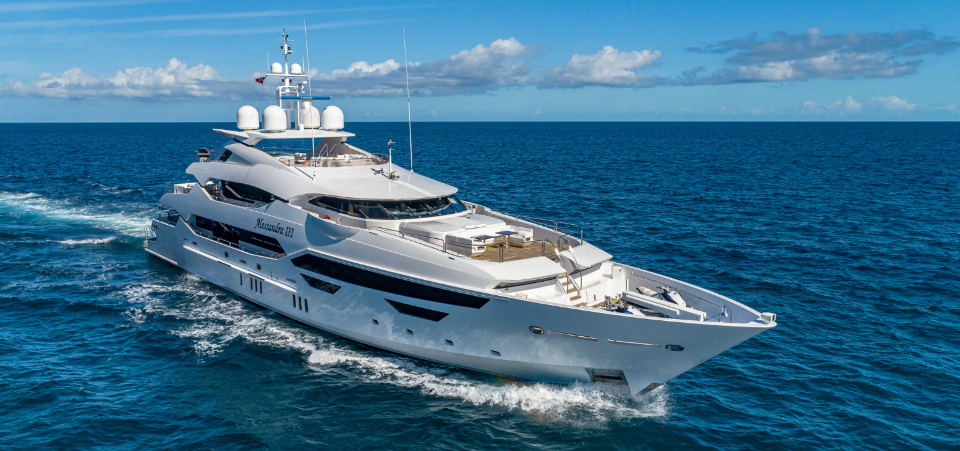
Defining a yacht
A yacht is more than just a boat; it’s a floating retreat, a sanctuary on the water. But what distinguishes a yacht from other vessels? While there is no universally accepted definition, yachts are generally characterized by their recreational and leisure-oriented design. Unlike commercial ships, which are built for transportation or commerce, yachts are crafted with comfort, luxury, and style in mind. At the heart of every yacht is the desire for adventure and exploration. Whether it’s cruising along the coast, anchoring in secluded coves, or racing against the wind, yachts offer unparalleled freedom and flexibility to their owners and guests.
Yachts come in various shapes, sizes, and configurations to cater to different preferences and purposes. From sleek and nimble sailing yachts to powerful and spacious motor yachts, there’s a yacht for every taste and lifestyle. But beyond their physical attributes, what truly sets yachts apart is the experience they provide. Whether you’re savoring a gourmet meal prepared by a private chef, lounging on the sun-drenched deck with a cocktail in hand, or diving into crystal-clear waters teeming with marine life, yachting offers a level of luxury and indulgence that is unmatched by any other form of travel.
In the next section, we’ll explore the various categories of yachts and delve deeper into what sets each type apart. So sit back, relax, and let your imagination set sail as we embark on this journey into the world of yachting.
Categories of yachts
Yachts come in a wide range of sizes, styles, and capabilities, catering to different preferences and purposes. Understanding the various categories of yachts can help prospective buyers or enthusiasts make informed decisions based on their needs and desires.

Small yachts
Small yachts, also known as “day sailers” or “weekenders,” typically range from 20 to 30 feet in length. These compact vessels are designed for short excursions along the coast or on inland waterways. Despite their modest size, small yachts offer a charming and intimate cruising experience, perfect for couples or small families looking to escape the hustle and bustle of everyday life.
Medium-sized yachts
Medium-sized yachts fill the gap between small day sailers and larger superyachts, spanning from 30 to 80 feet in length. These versatile vessels strike a balance between comfort and manageability, making them popular choices for both experienced sailors and novice enthusiasts. With spacious cabins, ample deck space, and a range of onboard amenities, medium-sized yachts offer the perfect blend of performance and comfort for extended cruising or entertaining guests.
Large yachts
Large yachts, also known as superyachts, are the epitome of luxury and extravagance on the water. Measuring over 80 feet in length, these floating palaces spare no expense when it comes to opulence and indulgence. From multiple decks and lavish interiors to state-of-the-art amenities and recreational facilities, large yachts offer unparalleled comfort and convenience for their owners and guests. Whether it’s hosting lavish parties, exploring exotic destinations, or simply enjoying the finer things in life, large yachts provide an unmatched level of luxury and sophistication.
In the following sections, we’ll explore the factors that determine yacht size and delve deeper into the considerations that prospective buyers should keep in mind when choosing the right yacht for their needs and preferences. So whether you’re dreaming of setting sail on a small day sailer or cruising the world in a luxurious superyacht, there’s a yacht out there waiting to fulfill your every desire.
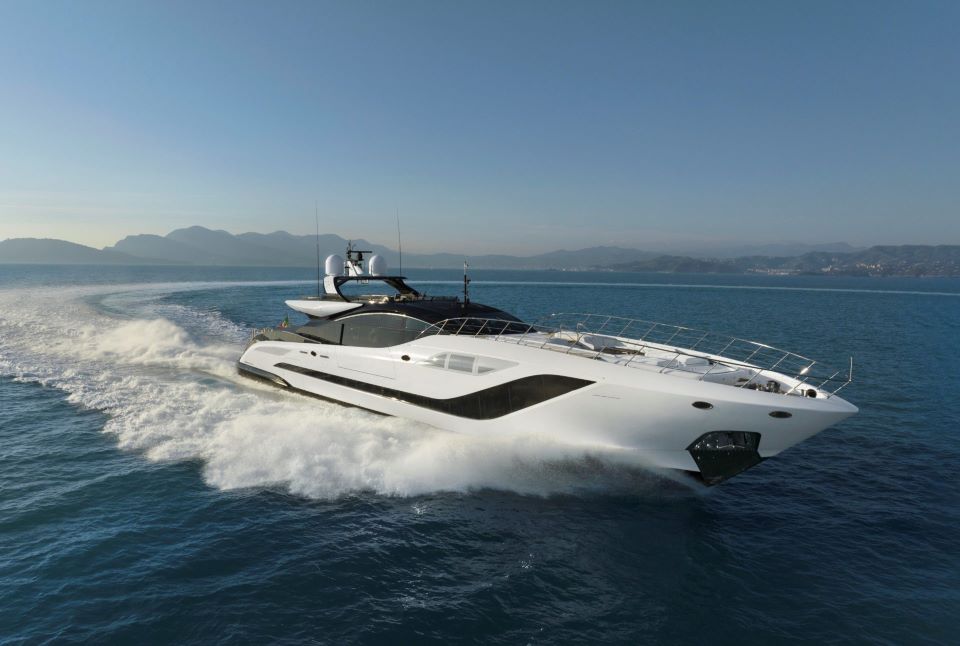
Factors determining yacht size
The size of a yacht is determined by various factors, each playing a crucial role in its design, capabilities, and overall appeal. Understanding these factors can help prospective buyers or enthusiasts make informed decisions based on their preferences and intended usage.
One of the primary factors influencing yacht size is its overall length, typically measured from the tip of the bow to the stern. Longer yachts offer more interior space, allowing for larger cabins, expansive living areas, and additional amenities. However, they also require more experienced crew members to operate effectively and may have higher operating costs.
The beam of a yacht refers to its width at its widest point. A wider beam provides stability and increases interior space, allowing for more comfortable accommodations and enhanced onboard amenities. However, wider yachts may be more challenging to maneuver in tight spaces and may require specialized docking facilities.
Draft refers to the depth of a yacht’s hull below the waterline. Shallow-draft yachts are ideal for navigating in shallow waters, such as coastal areas, rivers, or inland waterways. Deeper drafts, on the other hand, provide better stability and seakeeping abilities in open seas. Prospective buyers should consider their intended cruising grounds and navigational requirements when choosing a yacht with the appropriate draft.
Gross Tonnage
Gross tonnage is a measurement of a yacht’s overall internal volume, including all enclosed spaces such as cabins, saloons, and engine rooms. While not directly related to size, gross tonnage can provide an indication of a yacht’s spaciousness and comfort level. Larger yachts typically have higher gross tonnage values, reflecting their greater interior volume and luxury amenities.
By considering these factors in combination with their personal preferences, budget, and intended usage, prospective buyers can select the perfect yacht size to suit their needs and lifestyle. In the following sections, we’ll explore how these factors apply to different categories of yachts and delve deeper into the considerations that should be taken into account when choosing the right yacht for your next adventure on the water.
Legal definitions
In addition to the physical characteristics that determine yacht size, various maritime authorities and regulatory bodies have established legal definitions and classifications for yachts . These definitions may vary from one jurisdiction to another and can have significant implications for yacht owners in terms of licensing, registration, and operational requirements.
For example, the International Maritime Organization (IMO) defines a yacht as a pleasure vessel that is used for non-commercial purposes, including recreation, sport, and leisure activities. However, individual countries may have their own specific regulations regarding yacht size, safety standards, and environmental compliance.
In the United States, for instance, the U.S. Coast Guard (USCG) categorizes recreational vessels based on length and assigns specific requirements for equipment, safety features, and operator qualifications. Yachts over a certain length may be subject to additional regulations, such as mandatory safety inspections or documentation requirements.
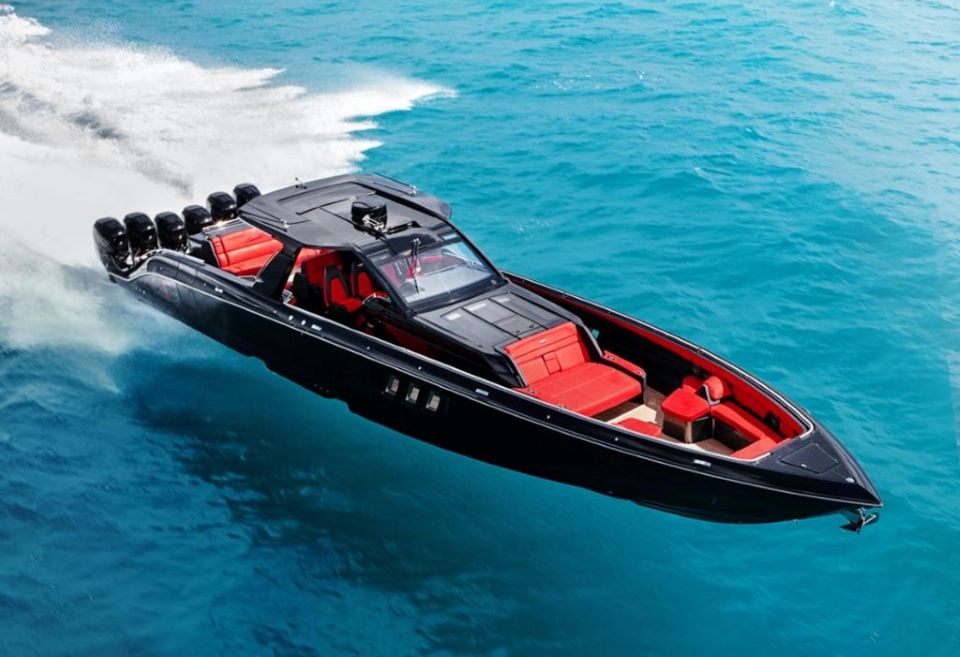
Popular yacht sizes
Yachts come in a myriad of sizes, each offering its own unique blend of performance, comfort, and luxury. Understanding the most popular yacht sizes can help prospective buyers or enthusiasts narrow down their options and find the perfect vessel to suit their needs and preferences.
40-foot cruisers
Cruisers measuring around 40 feet in length are popular choices for recreational sailors and weekend adventurers. These mid-sized yachts offer a good balance of comfort and maneuverability, making them ideal for coastal cruising or exploring inland waterways. With spacious cabins, ample deck space, and modern amenities, 40-foot cruisers provide a comfortable and enjoyable cruising experience for couples or small families.
60-foot motor yachts
Motor yachts in the 60-foot range are favored by those seeking a blend of luxury and performance. These versatile vessels offer ample interior space, stylish design, and powerful engines capable of cruising at higher speeds. Whether it’s island hopping in the Caribbean or entertaining guests in the Mediterranean, 60-foot motor yachts provide the perfect platform for enjoying life on the water in style and comfort.
100-foot superyachts
For those with a taste for the finer things in life, nothing beats the luxury and prestige of a 100-foot superyacht. These floating palaces offer unrivaled comfort, opulence, and extravagance, with multiple decks, lavish interiors, and a wealth of amenities to indulge even the most discerning of tastes. From hosting glamorous parties to embarking on extended voyages to exotic destinations, 100-foot superyachts provide an unmatched level of luxury and sophistication for their owners and guests.
Benefits of different sizes
Each yacht size offers its own set of advantages and benefits, catering to different preferences, lifestyles, and cruising needs. Understanding the benefits of different yacht sizes can help prospective buyers or enthusiasts make informed decisions based on their priorities and desired experiences.
Small yachts, such as day sailers or weekender vessels, offer several benefits:
- Affordability: Small yachts are often more affordable to purchase and maintain compared to larger vessels, making them accessible to a wider range of enthusiasts.
- Ease of handling: With their compact size and simpler systems, small yachts are easier to maneuver and operate, making them ideal for novice sailors or solo adventurers.
- Intimacy: Small yachts provide a more intimate and cozy cruising experience, allowing owners and guests to connect with the sea and each other on a deeper level.
- Versatility: Small yachts are versatile vessels that can navigate in shallow waters, explore secluded coves, and access remote destinations that larger vessels may not be able to reach.
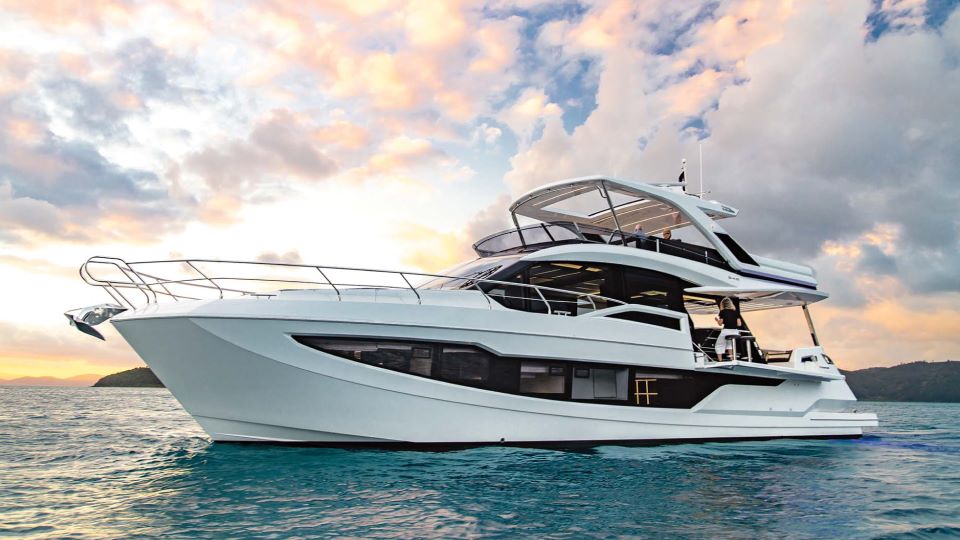
Medium-sized yachts offer a balance of comfort, performance, and versatility, making them popular choices for a wide range of enthusiasts:
- Comfort: Medium-sized yachts feature spacious cabins, ample deck space, and modern amenities, providing a comfortable and enjoyable cruising experience for couples or small families.
- Maneuverability: With their moderate size and responsive handling, medium-sized yachts are easy to maneuver in tight spaces and challenging conditions, giving owners confidence and peace of mind on the water.
- Flexibility: Medium-sized yachts are versatile vessels that can be used for a variety of cruising activities, from weekend getaways to extended voyages, allowing owners to tailor their experiences to their preferences and schedules.
Large yachts, also known as superyachts, offer unparalleled luxury, comfort, and prestige, setting them apart as the ultimate symbol of success and sophistication on the water:
- Luxury: Large yachts feature extravagant interiors, state-of-the-art amenities, and personalized service, providing owners and guests with a truly luxurious and indulgent cruising experience.
- Entertainment: Large yachts are floating entertainment hubs, with multiple decks, swimming pools, spas, cinemas, and other recreational facilities to keep guests entertained and pampered for days on end.
- Prestige: Owning a large yacht is a status symbol in itself, signaling wealth, power, and success to the world. Whether it’s hosting glamorous parties or rubbing elbows with the elite, large yacht owners enjoy a level of prestige and privilege that few can match.
In conclusion, the size of a yacht ultimately comes down to personal preference, lifestyle, and cruising needs. Whether you prefer the intimacy of a small yacht, the versatility of a medium-sized vessel, or the luxury of a large superyacht, there’s a yacht out there waiting to fulfill your every desire and whisk you away on the adventure of a lifetime.
Costs associated with owning different sizes
Owning a yacht is a dream come true for many, but it’s essential to understand that yacht ownership comes with various costs and expenses. The size of the yacht plays a significant role in determining these costs, as larger vessels typically incur higher expenses across the board. Here’s a breakdown of the costs associated with owning different sizes of yachts:
While small yachts are generally more affordable to purchase and maintain compared to larger vessels, they still come with their own set of costs, including:
- Purchase price: The initial cost of buying a small yacht can vary depending on factors such as age, condition, and manufacturer.
- Maintenance: Small yachts require regular maintenance to keep them in top condition, including cleaning, painting, engine servicing, and repairs.
- Mooring fees: Depending on where you moor your yacht, you may have to pay monthly or yearly fees for dockage, storage, and access to facilities.
- Insurance: Yacht insurance premiums are based on factors such as the vessel’s value, size, age, and intended usage.
- Operating expenses: This includes fuel, oil, dockage fees, maintenance supplies, and other day-to-day expenses associated with owning and operating a yacht.
Medium-sized yachts offer a balance of comfort and affordability, but they still come with significant costs, including:
- Purchase price: Medium-sized yachts typically cost more than small vessels due to their larger size and more extensive amenities.
- Maintenance: Like small yachts, medium-sized vessels require regular maintenance to ensure their safety, performance, and appearance.
- Crew salaries: Depending on the size and complexity of the yacht, you may need to hire professional crew members to operate and maintain the vessel.
- Insurance: Yacht insurance premiums for medium-sized vessels are higher than those for small yachts due to their increased value and risk exposure.
- Operating expenses: Medium-sized yachts have higher operating costs than small vessels due to their larger size, increased fuel consumption, and more extensive amenities.
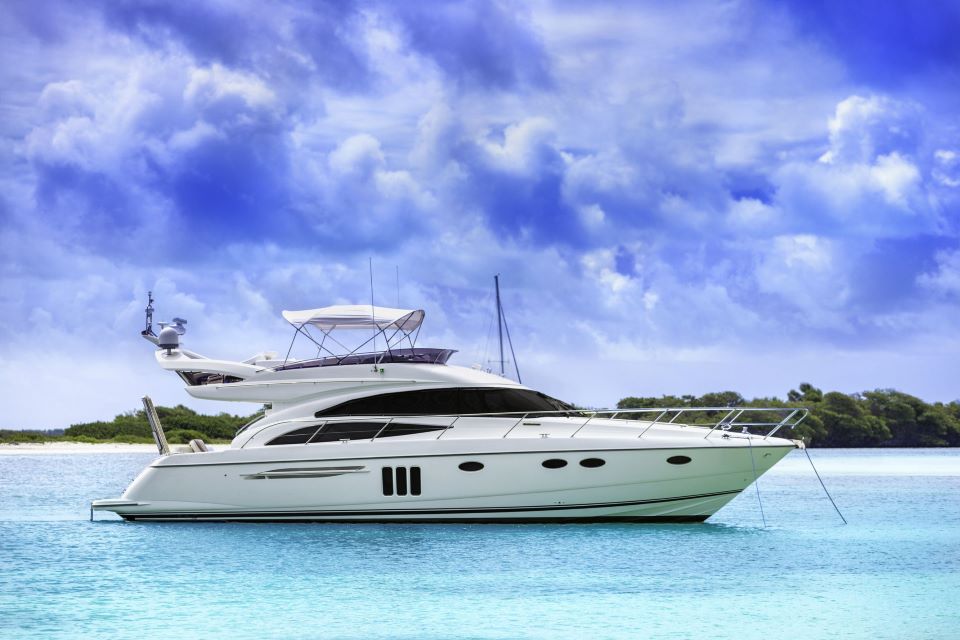
Large yachts, also known as superyachts, are the epitome of luxury and extravagance, but they come with equally extravagant costs, including:
- Purchase price: Large yachts are among the most expensive assets in the world, with prices ranging from tens of millions to hundreds of millions of dollars.
- Maintenance: Maintaining a large yacht requires a dedicated team of professionals, including engineers, technicians, chefs, and stewardesses, to keep the vessel in pristine condition.
- Crew salaries: Large yachts require a full complement of crew members to operate and maintain the vessel, including captains, engineers, deckhands, chefs, and stewardesses, with salaries ranging from tens of thousands to hundreds of thousands of dollars per year.
- Operating expenses: Operating a large yacht is a costly endeavor, with expenses including fuel, dockage fees, insurance premiums, provisioning, maintenance supplies, and other day-to-day costs.
- Upgrades and refits: Large yachts often undergo regular upgrades and refits to keep them in line with the latest trends and technologies, with costs running into the millions of dollars.
In conclusion, owning a yacht is a significant investment that requires careful consideration of the associated costs and expenses. Whether you opt for a small day sailer, a medium-sized cruiser, or a large superyacht, it’s essential to budget for the purchase price, maintenance, insurance, and operating expenses to ensure a smooth and enjoyable yachting experience. By understanding the costs associated with different sizes of yachts, prospective buyers can make informed decisions and embark on their yachting adventures with confidence and peace of mind.
Maintenance considerations
Proper maintenance is essential for keeping a yacht in top condition and ensuring the safety and comfort of its passengers and crew. Different sizes of yachts come with their own unique maintenance considerations, ranging from routine tasks to more complex repairs and upgrades. Here are some key maintenance considerations for yachts of different sizes:
Small yachts require regular maintenance to keep them in good working order and prevent issues from arising. Some key maintenance tasks for small yachts include:
- Cleaning: Regular cleaning of the hull, deck, and interior surfaces helps prevent the buildup of dirt, grime, and saltwater residue.
- Painting: Periodic painting of the hull and topsides helps protect the yacht from corrosion, fouling, and UV damage.
- Engine servicing: Routine servicing of the engine and other mechanical systems ensures reliable performance and prevents breakdowns.
- Electrical checks: Regular inspection of the electrical system helps identify and address any issues before they escalate into larger problems.
- Safety equipment checks: Periodic inspection of safety equipment such as life jackets, fire extinguishers, and emergency signaling devices ensures they are in good working condition and ready for use in case of an emergency.
Medium-sized yachts require more extensive maintenance compared to small vessels due to their larger size and more complex systems. Some key maintenance tasks for medium-sized yachts include:
- Hull maintenance: Regular inspection and maintenance of the hull, including cleaning, painting, and repairs, help prevent corrosion, osmosis, and other structural issues.
- Engine and machinery servicing: Regular servicing of engines, generators, and other mechanical systems ensures reliable performance and prevents breakdowns.
- Electronics upgrades: Periodic upgrades to navigation, communication, and entertainment systems help keep the yacht up to date with the latest technologies and improve safety and comfort.
- Interior refurbishment: Occasional refurbishment of the interior, including upholstery, carpets, and furnishings, helps keep the yacht looking fresh and inviting for guests.
- Safety drills: Regular safety drills and crew training help ensure that everyone on board knows what to do in case of an emergency and can respond quickly and effectively.
Large yachts, or superyachts, require the most extensive maintenance due to their size, complexity, and luxury amenities. Some key maintenance tasks for large yachts include:
- Comprehensive refits: Periodic refits and upgrades to the yacht’s systems, amenities, and interior spaces help keep it in line with the latest trends and technologies.
- Regular inspections: Frequent inspections of the hull, machinery, and systems help identify and address any issues before they escalate into larger problems.
- Crew training: Ongoing training and certification for the crew help ensure that they are skilled, knowledgeable, and capable of operating and maintaining the yacht to the highest standards.
- Environmental compliance: Compliance with environmental regulations and best practices, including waste management, fuel efficiency, and emissions reduction, helps minimize the yacht’s impact on the marine environment.
- Emergency preparedness: Comprehensive emergency preparedness plans and drills help ensure that the crew is prepared to respond effectively to any emergency situation, from medical emergencies to fire or flooding.
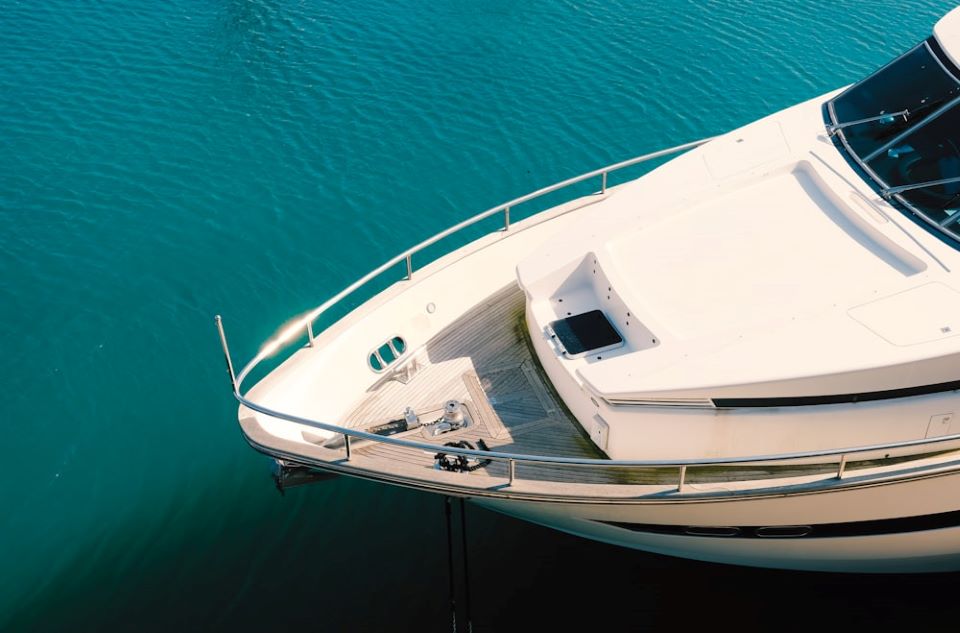
In conclusion, proper maintenance is essential for keeping a yacht in top condition and ensuring the safety and comfort of its passengers and crew. By understanding the maintenance considerations associated with different sizes of yachts, owners can develop comprehensive maintenance plans and schedules to keep their vessels in pristine condition and enjoy many years of safe and enjoyable cruising on the water.
Key Takeaways
- Yacht Classification: Yachts come in various sizes and types, from small sailing yachts to extravagant mega yachts, each offering different levels of luxury and amenities.
- Size Criteria: While there’s no strict size requirement to qualify as a yacht, boats typically need to exceed 30 feet in length to be considered as such.
- Personal Preference: The size of a yacht is often influenced by individual preferences, intended usage, budget constraints, and desired amenities.
- Regulatory Considerations: Regulations regarding yacht size vary across jurisdictions, encompassing registration, licensing, and safety standards.
- Cost Implications: Owning a yacht entails significant financial commitments, including acquisition costs, maintenance expenses, and operational outlays, which vary based on the size and features of the vessel.
- Social Status and Prestige: Yachts serve as status symbols, symbolizing affluence and social standing, with larger and more opulent yachts often associated with higher prestige.
Choosing the right size yacht is a decision that requires careful consideration of various factors, including budget, lifestyle, and intended usage. Whether you opt for a small day sailer for weekend getaways, a medium-sized cruiser for coastal cruising, or a large superyacht for ultimate luxury and prestige, there’s a yacht out there to fulfill your every desire and whim.
Yachting offers a unique blend of freedom, adventure, and luxury, allowing owners and guests to explore the world’s oceans and coastal areas in style and comfort. From the thrill of sailing on the open sea to the tranquility of anchoring in secluded coves, yachting provides endless opportunities for unforgettable experiences and cherished memories.
1. What size boat is considered a yacht?
A yacht is generally considered to be any recreational vessel used for pleasure and leisure activities. While there is no strict definition based solely on size, yachts typically range from small day sailers to large superyachts measuring over 80 feet in length.
2. How do I determine the right size yacht for me?
The right size yacht depends on your preferences, budget, and intended usage. Consider factors such as the number of passengers, desired amenities, cruising grounds, and maintenance costs when choosing the size that best suits your needs and lifestyle.
3. What are the benefits of owning different sizes of yachts?
Each size of yacht offers its own unique benefits, from affordability and ease of handling with small yachts to luxury and prestige with large superyachts. Small yachts are more intimate and cost-effective, while larger vessels provide more space, amenities, and comfort for extended cruising and entertaining.
4. How much does it cost to own and maintain a yacht?
The costs of owning and maintaining a yacht vary depending on its size, age, condition, and usage. Small yachts are generally more affordable to purchase and maintain compared to larger vessels, but all yachts incur expenses such as purchase price, maintenance, insurance, mooring fees, and operating costs.
5. What environmental considerations should I keep in mind when owning a yacht?
Yacht ownership comes with environmental responsibilities, including minimizing fuel consumption and emissions, managing waste properly, and avoiding disturbance to marine habitats and wildlife. Implementing sustainable practices and supporting conservation efforts can help minimize the environmental impact of yachting.

Boating Basics Online is reader-supported. When you buy via our links, we may earn a commission at no cost to you. Learn more
What Size Boat Is Considered a Yacht? Get the Facts Here!
Written by J. Harvey / Fact checked by S. Numbers
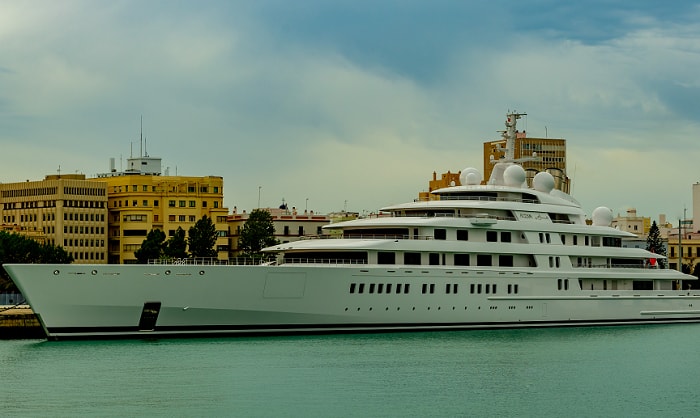
Yachts are a symbol of luxury, which is why they are almost always quite large when seen in movies and television. But have you ever wondered what size boat is considered a yacht? We wondered the same thing as well, and here’s what we found.
In this article, we’ll cover how big is a yacht, including yacht sizes. We’ll also take a look at how yachts came about to gain a better understanding of what makes a yacht.
Keep reading and you’re certain to learn something new.
Table of Contents
What Makes a Yacht
History of the yacht, 1. sailing yacht, 2. motorized yacht, 3. superyacht, 4. megayacht, 3. facilities.
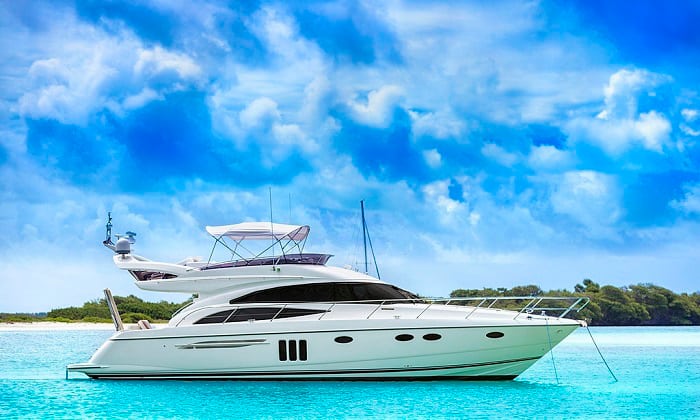
There is no single yacht definition set in stone. So when does a boat become a yacht?
It’s all a matter of purpose. Most of the time, it’s the manufacturer of a boat that decides whether the vessel they made is a yacht. But the most notable characteristic of a yacht is its ability to entertain.
Yachts are water vessels intended for recreation, and they are most well-known for luxury. Owning a yacht is in itself a luxury, and the usual offerings of a yacht are plenty luxurious. Lounges, dining areas, bars, private cabins, and quarters are standard features for yachts.
It’s almost like being in a hotel on the water, a hotel that also has the mobility of a high-performance boat. Aside from these standard features, yachts can have even more jaw-dropping offerings such as pools or sports areas.
Another defining trait of yachts, as mentioned earlier, is their high performance, which means they have a powerful engine or a large sail. All of the known features of yachts point to them needing to have a certain amount of space and being of a certain size.
In order to further understand what yachts are, let’s take a look at the beginnings of this luxury vessel.
The name “yacht” comes from the Dutch word “jaght” meaning hunter and also refers to a Dutch sailing vessel. After one of these vessels was used to carry King Charles the Second back to England, he and his brother had a pair of yachts made.
These yachts, built for recreation and used for racing, became popular among the nobility, who many had yachts of their own built. While such recreational vessels had been built even before King Charles the Second used one to return to England, the name yacht was the one that stayed.
In the beginning, yachts were vessels for transporting important people, and luxury was just the result of accommodating people of such stature. Eventually, yachts became synonymous with luxury, and people started building them for such purposes.
In the 20th century, the rapid development of technology and production gave the yacht an expanded purpose, becoming a status symbol for wealthy people.
These days, the cost for yachts has become lower, which makes them more accessible to a wider range of people. However, the ceiling for luxury has become so much higher with private yachts going as high as millions of dollars in value.
Types of Yacht
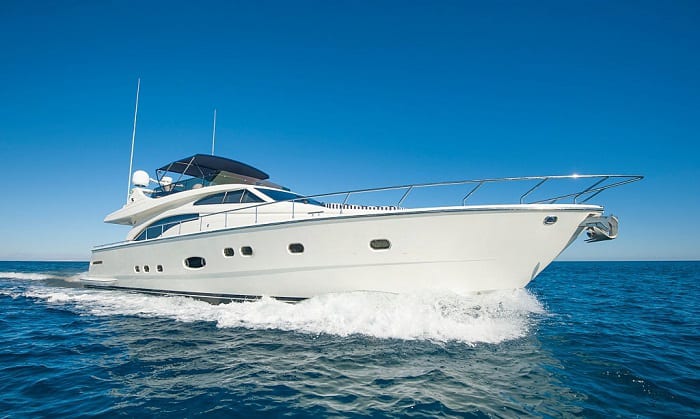
Yachts being as ambiguous as they are, there are many types. The types of yachts below do not belong to a single category, but they are common types that you would do well to remember to avoid getting lost in the vast sea of definitions for yachts.
The sailing yacht is powered by large sails. The Dutch jacht was itself a fast sailboat used by the Dutch navy for chasing down pirates. This high performance is something that the yacht inherited and is expected of yachts to this day.
These days, sailing yachts can still be found, despite the prevalence of motorized boats . There are also hybrid types, yachts that have both sails and boat motors .
The motorized yacht is simply a yacht with an engine. However, there is nothing simple about the level of performance expected of such a vessel. Owing to the yacht’s history of being used for racing, even motorized yachts are expected to be speedy.
Yacht engines need to have a certain degree of power and handling that allows yachts to retain high performance even when they are as large as they are. The size of such engines and the space needed to fit these engines make the yacht even more costly.
The name superyacht is somewhat self-explanatory in what it is. Whatever a yacht is, make it more. Superyachts are bigger, more luxurious, and are able to accommodate more people aboard. This also means a higher level of requirement for their crews, as superyachts are professionally crewed.
Superyachts are expected to be at least 24 meters or around 79 feet long. Most superyachts are longer than this, though, and reach lengths of over 100 meters. The longest superyacht at the moment is the Azzam at 180m or 590ft, which is valued at around 600 million dollars.
Another type is the megayacht that is expected to be at least 50m in length. For some reason though, the Azzam is officially a superyacht as it is up to the manufacturer or owner to decide whether their vessel is to be considered a superyacht or a megayacht.
Difference Between a Boat and a Yacht
To further illustrate what yachts are, let’s compare them with boats. We’ll take a look at three points to compare them.
There is no minimum size for boats, although they are usually 15 to 30 ft long.
While yachts do not have an actual size limit nor an actual size requirement, as long as they can entertain guests, they can be called a yacht. However, yachts are expected to be at least 10m or 33 feet long to have enough space for the level of performance and accommodation expected of a yacht.
Terms such as superyacht and megayacht help to identify the size range of such vessels but are usually not required. Whether a yacht is private or commercial is usually the more pressing matter.
As mentioned above, superyachts need a professional crew. This is due to the superyacht requiring a certain level of performance and accommodation.
As far as boats and yachts are concerned, they are similar. They both do not require a crew, professional or otherwise, and can even be sailed single-handedly. While yachts need to be able to entertain, accommodating as many as eight guests is manageable by as few as two or three people.
Boats are transport vessels, and as long as they can carry what they need across the water, they are boats. The facilities they have on board are dictated by what is necessary for them to fulfill their purpose.
Yachts, however, need to both transport and accommodate people. Luxury and recreation are perhaps the most defining characteristics of such a vessel. There is no true requirement other than to entertain, but the facilities aboard are all for satisfying the said requirement.
When is a boat considered a yacht? After reading this article, it should be clear that it is all a matter of luxury. Although there is no standard way of defining yachts, you now have a better idea of what characteristics to look for.
If you know anyone else wondering what size boat is considered a yacht, please share this article with them as well so that they too can learn. Also, feel free to leave your comments below.
Remember to boat safely.

“My intention from the first day establishing Boating Basics Online is to provide as much help as possible for boaters who want to experience a first safe and convenient trip. So feel free to join us and share your beautiful journeys to the sea!”
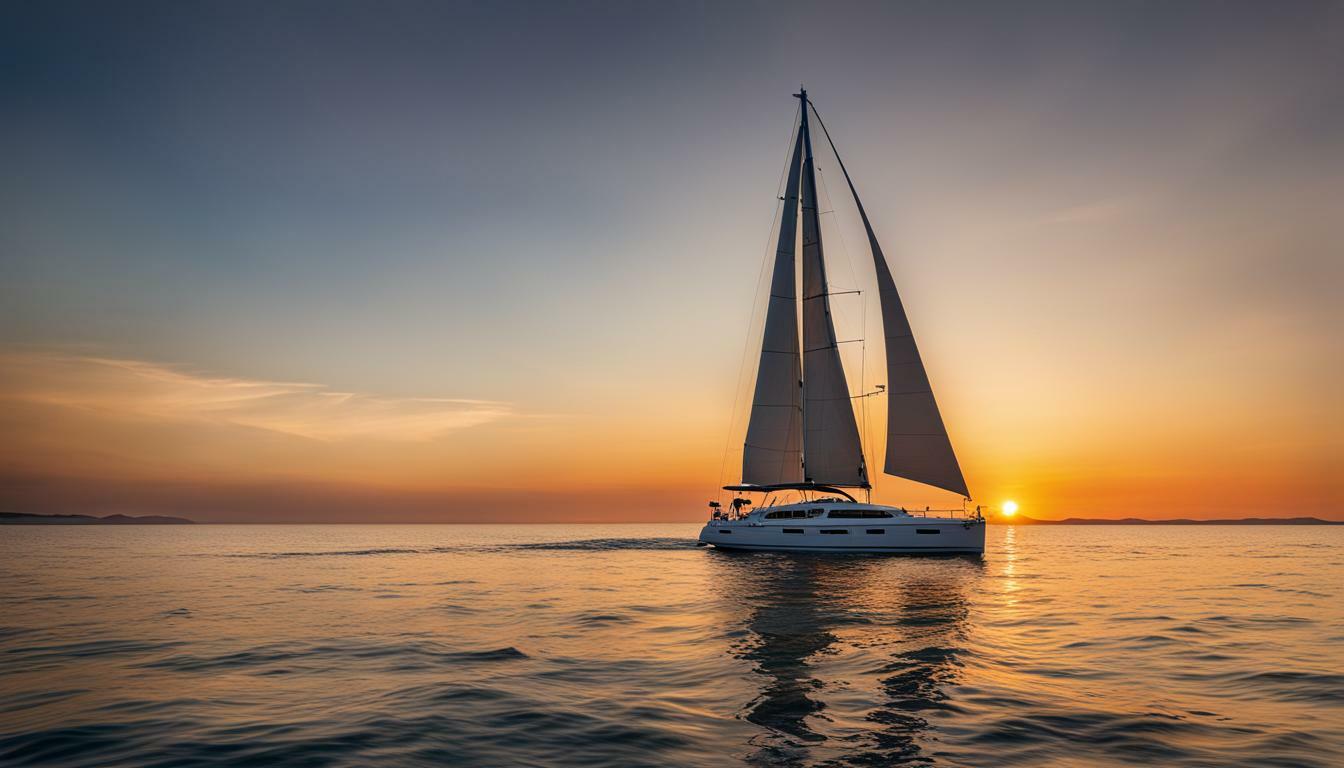
Unraveling the Mystery: What Makes a Boat a Yacht?
- Nautical Terms
When it comes to determining whether a boat can be considered a yacht, size and luxury are the key factors. While there is no official point at which a boat becomes a yacht, generally anything over 40-feet in overall length could be considered a yacht. As the size increases, the boat may be classified as a “mega-yacht” or “superyacht.” However, it’s important to note that length alone is not the sole determining factor. Luxury amenities and features also play a significant role.
The term “yacht” originates from the Dutch word “jaght,” which referred to pleasure boats used by royalty. Therefore, luxury is a defining feature of a yacht. A yacht is more likely to be classified as such if it is large in size and equipped with numerous amenities and entertainment features.
In terms of specific features, Scout Boats offer a range of vessels that could be considered yachts. For example, the 530 LXF boasts a stunning interior cabin with luxury features such as a private master stateroom, hanging closet, and hidden storage. The 420 LXF features a hydraulic beach platform and a Seakeeper Gyro stabilizing system, enhancing comfort and enjoyment. The 380 LXF is another notable model, with a convertible hideaway entertainment system that serves multiple purposes, including bait preparation, grilling, and tackle access. These features place these boats firmly in the category of yachts.
Yacht certification is another important aspect to consider when determining what makes a boat a yacht . Yacht certification involves a thorough evaluation of a yacht’s design, construction, safety features, and overall seaworthiness. Various certification bodies, such as the National Marine Manufacturers Association (NMMA), assess yachts to ensure they meet necessary requirements for safe operation in different waters. The NMMA certification process, for instance, establishes standards that guarantee yachts are safe, reliable, and environmentally compliant.
Table of Contents
Key Takeaways:
- A yacht is generally considered to be a boat over 40-feet in overall length, but length alone is not the sole determining factor.
- Luxury amenities and features play a significant role in distinguishing a yacht from a regular boat.
- Specific features found in luxury yachts, such as those offered by Scout Boats, place them firmly in the category of yachts.
- Yacht certification is crucial for ensuring a yacht’s safety, performance, and compliance with necessary standards.
- Various certification bodies, such as the National Marine Manufacturers Association (NMMA), assess yachts to ensure they meet necessary requirements.
Size and Length: The First Step to Yacht Status
While there is no official point at which a boat becomes a yacht, generally anything over 40-feet in overall length could be considered a yacht. As the size increases, the boat may be classified as a “mega-yacht” or “superyacht.” However, it’s important to note that length alone is not the sole determining factor. Luxury amenities and features also play a significant role.
The distinction between a boat and a yacht is not solely based on size and length. A boat over 40 feet may be a yacht, but it requires other distinguishing features to obtain such status. A yacht is expected to have luxury amenities and features to provide lavish enjoyment for its owners and guests. In comparison, boats usually only have the basic necessities.
When it comes to yacht size requirements , the length is not the only factor, and it varies depending on the size of the vessel. While a 45-foot sailing boat may be impressive, it does not meet the same standards as a 45-foot motor yacht. Motor yachts are usually wider and offer more amenities, such as air-conditioned cabins, larger saloons, and a stable platform to host events. Sailing yachts offer a different form of luxury, with extensive sails to harness the power of the wind and provide the ultimate sailing experience.
Size and length are essential factors when classifying boats and yachts. However, the level of comfort, luxury, and design also play a significant role. As a result, manufacturers offer a range of yachts to accommodate different preferences and lifestyles. Some prefer larger vessels with all the latest amenities, while others prefer a smaller, more agile vessel with exceptional handling characteristics.
The Role of Luxury: Taking Yachting to the Next Level
The term “yacht” originates from the Dutch word “jaght,” which referred to pleasure boats used by royalty. Therefore, luxury is a defining feature of a yacht. When it comes to determining whether a boat can be considered a yacht, size and luxury are the key factors. While there is no official point at which a boat becomes a yacht, generally anything over 40-feet in overall length could be considered a yacht. As the size increases, the boat may be classified as a “mega-yacht” or “superyacht.” However, it’s important to note that length alone is not the sole determining factor. Luxury amenities and features also play a significant role.
Yacht certification is another important aspect to consider when determining what makes a boat a yacht . Yacht certification involves a thorough evaluation of yacht’s design, construction, safety features, and overall seaworthiness. Various certification bodies, such as the National Marine Manufacturers Association (NMMA), assess yachts to ensure they meet necessary requirements for safe operation in different waters. The NMMA certification process, for instance, establishes standards that guarantee yachts are safe, reliable, and environmentally compliant.
For yacht owners, certification is often a requirement for operating a vessel in certain waters. Many countries have regulations stipulating that yachts must be certified to be operated within their jurisdiction. Failure to comply with these regulations can result in penalties and fines. Additionally, certification is crucial for insurance purposes. Many insurance companies require a certain level of certification before providing coverage. Certification indicates that a yacht meets safety and performance standards, reducing the risk of accidents or damage. Without certification, obtaining insurance coverage may be challenging or come with higher premiums.
Moreover, yacht certification can positively impact a yacht’s resale value. Potential buyers are more likely to be attracted to a certified yacht, as it implies that the vessel has been well-maintained, safe, and seaworthy. In terms of environmental sustainability, some certification schemes evaluate a yacht’s emissions, noise levels, and other factors that can affect the marine environment. By meeting these standards, yacht owners contribute to a more sustainable yachting industry.
Yacht certification standards vary depending on the certification scheme and the country of registration. Examples of certification schemes include the European Union’s Recreational Craft Directive (RCD), the American Boat and Yacht Council (ABYC) standards, and the International Organization for Standardization (ISO) standards. These schemes assess yachts based on various criteria, such as safety, performance, and environmental impact. Yacht owners should research the applicable certification schemes and ensure their yachts meet all relevant standards and criteria to operate safely and in compliance with regulations.
Notable Yacht Design Elements: Scout Boats and Beyond
In terms of specific features, Scout Boats offer a range of vessels that could be considered yachts. The 530 LXF, for example, boasts a stunning interior cabin with luxury features such as a private master stateroom, hanging closet, and hidden storage. The 420 LXF features a hydraulic beach platform and Seakeeper Gyro stabilizing system, enhancing comfort and enjoyment. Meanwhile, the 380 LXF has a convertible hideaway entertainment system that serves multiple purposes, including bait preparation, grilling, and tackle access. These features place these boats firmly in the category of yachts.
Yacht design elements are not limited to luxury features, however. Yachts also boast unique design elements that contribute to performance and comfort. These design elements include advanced hull shapes, dynamic stabilization systems, and sophisticated navigation and communication equipment. For example, many yachts use wave-piercing hulls that reduce hull resistance and minimize the risk of seasickness . Others use gyroscopic stabilizer systems that reduce yacht roll and increase stability.
Yacht Certification: Ensuring Safety and Quality Standards
The importance of yacht certification.
For yacht owners, certification is often a requirement for operating a vessel in certain waters. Yacht certification involves a thorough evaluation of a yacht’s design, construction, safety features, and overall seaworthiness. This process ensures that a yacht meets the necessary standards for safe operation in different waters. Various certification bodies, such as the National Marine Manufacturers Association (NMMA), assess yachts to establish standards that ensure they are safe, reliable, and environmentally compliant.
Yacht certification is not only a legal requirement but also beneficial for insurance purposes. Many insurance companies demand a certain level of certification before providing coverage. Certification indicates that a yacht meets safety and performance standards, minimizing the risk of accidents or damage. Without certification, obtaining insurance coverage may be challenging or come with higher premiums.
Moreover, yacht certification can have a positive impact on a yacht’s resale value. Potential buyers are more likely to be attracted to a certified yacht, as it implies that the vessel has been well-maintained, safe, and seaworthy. Yacht certification schemes evaluate many aspects of a yacht, including its emissions, noise levels, and other factors that can affect the marine environment. By meeting these standards, yacht owners contribute to a more sustainable yachting industry.
Resale Value and Market Appeal: The Impact of Yacht Certification
Moreover, yacht certification can positively impact a yacht’s resale value. When a yacht is certified, potential buyers perceive it as a safer, more reliable, and better-maintained vessel. Certification implies that the yacht meets safety and performance standards, reducing the risk of accidents and damage. Buyers are, therefore, more likely to be attracted to a certified yacht. This positive market appeal can increase the resale value of a yacht, making certification a worthwhile investment for yacht owners.
For yacht owners, yacht certification ensures compliance with regulations. Most countries have regulations stipulating that yachts must be certified to be operated within their jurisdiction. Operating an uncertified yacht can result in penalties and fines. Yacht certification is also crucial for insurance purposes. Many insurance companies require a certain level of certification before providing coverage. Without certification, obtaining insurance coverage may be challenging or come with higher premiums.
Luxury yacht criteria and yacht certification also contribute to environmental sustainability. Yacht certification schemes evaluate emissions, noise levels, and other factors that can affect the marine environment. By adhering to these standards, yacht owners can minimise their environmental impact, contributing to a more sustainable yachting industry.
Environmental Sustainability: Yacht Certification and the Marine Environment
In terms of environmental sustainability, some certification schemes evaluate a yacht’s emissions, noise levels, and other factors that can affect the marine environment. The aim is to ensure that yachts operate within environmentally friendly parameters.
The International Organization for Standardization (ISO) has developed the ISO 14001 standard, which provides a framework for assessing and improving environmental performance. The standard covers areas such as energy efficiency, waste management, and pollution control. Yacht owners can use this standard to evaluate their environmental impact and take steps to reduce it.
In addition, the Recreational Craft Directive (RCD) of the European Union includes regulations to reduce emissions from recreational boats. The RCD specifies limits for carbon monoxide, nitrogen oxides, and hydrocarbons, which are harmful pollutants that can affect air and water quality.
Yacht owners can also take steps to reduce the environmental impact of their vessels, such as using eco-friendly cleaning products, reducing fuel consumption, and minimizing waste. By doing so, they contribute to the sustainability of the yachting industry and help protect the marine environment for future generations.
In conclusion, while there is no precise definition of when a boat becomes a yacht, size and luxury are essential factors to consider. Generally, a boat over 40-feet in length can be classified as a yacht, with larger vessels falling into the categories of “mega-yachts” or “superyachts.” Luxury amenities and features further distinguish a boat as a yacht. Yacht certification is also crucial, ensuring a yacht’s safety, performance, and compliance with necessary standards. Certification is required for operating a yacht in specific waters, is important for insurance coverage and resale value, and promotes environmental sustainability. Understanding these factors helps unravel the mystery of what makes a boat a yacht.
Q: What size does a boat need to be to be considered a yacht?
A: Generally, anything over 40-feet in length could be considered a yacht.
Q: What role does luxury play in defining a yacht?
A: Luxury is a defining feature of a yacht, with large size and numerous amenities and entertainment features contributing to its classification.
Q: What are some notable yacht design elements?
A: Scout Boats offer luxury yachts with features such as private staterooms, hidden storage, hydraulic beach platforms, and Seakeeper Gyro stabilizing systems.
Q: Why is yacht certification important?
A: Yacht certification ensures a yacht’s design, construction, safety features, and overall seaworthiness meet necessary standards and regulations.
Q: Why is yacht certification important for insurance purposes?
A: Many insurance companies require yacht certification to provide coverage, as it indicates that the yacht meets safety and performance standards.
Q: How does yacht certification impact resale value?
A: Yacht certification positively impacts resale value, as potential buyers are more attracted to certified yachts due to their perceived safety and seaworthiness.
Q: How does yacht certification promote environmental sustainability?
A: Yacht certification schemes evaluate factors such as emissions and noise levels to ensure yachts adhere to environmentally friendly practices, contributing to a more sustainable yachting industry.
Source Links
- https://nuvomagazine.com/daily-edit/aboard-poirots-magnificent-century-old-motor-yacht-madiz
- https://scoutboats.com/blog/makes-boat-yacht/
- https://easyyacht.ae/blog/what-does-yacht-certified-mean/
Hi, I'm Mat, the author behind 12 Sailing. Welcome to my website where I invite you to join me as I navigate horizons through the fascinating world of sailing, tech, and aquatic leisure. With a passion for all things water, this platform serves as a hub for sailing enthusiasts and those who simply enjoy a dose of aquatic fun. Join me in exploring the captivating beauty of the open sea, diving into the latest sailing technologies, and discovering the endless possibilities of aquatic leisure. So, hop aboard and let's embark on a thrilling journey of adventure and discovery together. Welcome to 12 Sailing!
Related Posts
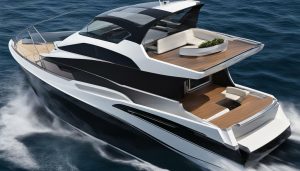
Unveiling the Mystery: What is a Transom on a Boat?

Understanding What is Draft on a Boat: A Detailed Guide
Understanding the Boat Beam: Definition, Importance, and Function

What Size Boat is Considered a Yacht? [Explained]
If you are referring to any type of water vessel you may hear it referred to in a number of different ways. Well, the truth of the matter is that most vessels are referred to with terms that are interchangeable.
That’s why you might hear the term boat and yacht used quite frequently in the same way. But that doesn’t mean that the two are the same!

What Size Boat is Considered a Yacht?
You will often hear these two terms used to refer to the same type of craft, but there is actually a standard at which a boat is considered a yacht. Once a boat is over 40 feet in length it is typically considered a yacht.
Once a boat is over 40 feet it may be called a yacht, but there are actually different classifications of yachts as well.
While you can refer to any of them as simply a ‘yacht’ they are more appropriately referred to by these other names. For example, a yacht that is over 120 feet is considered a superyacht. A superyacht over 200 feet is considered a mega yacht, and a mega yacht over 300 feet is called a Giga yacht.
You may hear these terms used slightly differently, however. Also, the largest yacht is a Giga yacht at 590 feet.
Is a 40-foot Boat a Yacht?
A 40-foot boat would generally be referred to as a yacht. However, you could also refer to this size of the yacht as a boat and most would not fault you for it. The two words can often be used interchangeably even if it is not the official way to refer to the vessel.
If the boat is much larger than 40 feet it is most definitely referred to as a yacht, and at that point, you may have many who don’t think that you should call it a boat at all.
Keep in mind that those who own yachts will definitely know the difference and they are the ones that may be a little more particular about what you call a specific water vessel.
What Defines a Yacht?
There are actually several different features that define a yacht, but the most important is that it is over 40 feet in length and that is a recreational boat that can be either a sailboat or a powerboat. There are other features that many use in referring to these types of boats.
In general, a yacht is not only 40 feet in length but also has several features such as cabins, bathrooms, and often a flybridge. They usually have extensive requirements in order to be able to operate them and may even require a crew (or, at least the bigger ones.)
They may also have high-tech navigation systems and electronics to make them even more fun as recreational vehicles.
Yachts are often used to travel across the ocean, which means that they require more powerful engines, large fuel tanks, and special equipment to make sure that they are safe on the water.
What is the Difference Between a Boat and a Yacht?
What is the difference between a boat and a yacht? In general, you can use these two terms interchangeably, though those who own yachts might prefer that you didn’t. Anything that is over 40 feet is typically a yacht, and anything smaller than this would be considered a boat. Keep in mind that a yacht must be able to travel in the ocean, which is one reason that it must be larger and more prepared in terms of equipment.
In general, a yacht will need at least some assistance in order for you to be able to drive it properly.
A boat will be something that can be crewed by only one person . That doesn’t mean that you may not want assistance for a smaller vessel and you may be able to go without a full crew for a smaller yacht, but these are general things to keep in mind.
How Many Feet is a Mega Yacht?
A mega yacht is considered one that is over 200 feet. Anything under 200 feet is generally considered a superyacht (if greater than 120 feet) and anything over a mega yacht is a Giga yacht. The largest of these is measures 590 feet!
There is occasionally some overlap or some contest regarding just where the different markers are between a boat, a yacht, and a superyacht as well as each of the other classifications.
Some don’t refer to larger superyachts as anything different and may only refer to yachts or superyachts.
What is the Height of a Yacht?
The height of a yacht varies depending on the specific boat or yacht that you are referring to. For example, a smaller yacht or boat will generally be between 15 and 20 feet in height. A Giga yacht, however, could be upwards of 100 feet.
If you’re looking at a sailboat version of a yacht they could actually be even larger than that.
Sailboats are often extremely tall and this will not vary as much based on whether you have a smaller or larger boat. Keep in mind that sailboats are going to be quite a bit larger all around.
If you’re looking at getting a yacht you’ll want to think about the size of the one that you want. You’ll be able to decide which category of yacht you actually want and you can find several different types and options within each category.
Yachts can be a whole lot of fun to experience and whether you have a powered version or a sailboat, you’re definitely going to have plenty of room to enjoy yourself with all of your family and friends.
References :
https://www.tgyg.com/resources/40-foot-yacht
Related Articles

Anyone who is interested in yachts can tell you that there’s a whole lot to…

If you’re looking to buy a boat you may be inclined to visit a boat…

You’ve likely heard the terms ‘boat’ and ‘ship’ used interchangeably, but are they actually interchangeable?…
Recent Content
How Much is a Honda Outboard Motor? [Price List]
The prices of Honda outboard motors start at $1,000 and climb up to a whopping $27,000. To be more precise, average prices within each category are as follows...
How Much HP does a Yamaha Outboard Have? [Chart]
As a rule of thumb, Yamaha outboard motors house 2.5-450 HP engines depending on the model. To be more precise, the engine power in each main class is as...
What Length Of Boat Is Considered A Yacht?
A yacht is a watercraft that exceeds 33 feet (10 meters) in length, with the International Yacht Brokers Association (IYBA) defining it as any watercraft over 40 feet in length. The United States Coast Guard (USCG) defines a yacht as any vessel over 56 feet (10 meters) in length. The size and overall design are crucial factors when a boat is considered a yacht.
There is no standard definition of what a yacht is, but it is likely to be at least 33 feet (10 meters) in length and may have been judged to have good aesthetic qualities. Some yachting companies consider a yacht to be a mega yacht at length of 100 feet and over. Superyachts can be defined as superyachts or megayachts, depending on their size. Super Yachts are typically 24 meters (78 feet) and above, while the generally considered point where a boat can start to qualify as a yacht is around 35 feet.
A yacht is typically bigger than a boat, and there is no strict definition of what a yacht is. The general consensus is that if a boat is over 40 feet in length, it is considered a yacht. The attitude towards a yacht is unrelated to length or price, and most boats under 33 feet that are singled out are considered a mega yacht.
In conclusion, a yacht is typically larger than a boat and has a cabin intended for overnight use. It is important to note that attitude is not related to length or price, and a vessel must be at least 56 feet (10 meters) in length to be considered a yacht.
📹 What Size Boat Is BEST?
————————————————————————————————————————————————————- DONATE …

📹 The Physics of Boats
Join marine physicist Dr. Patrick Rynne as he explores the science behind boat hull resistance, the Froude number, and how to …

Related Articles:
- What Length Is Considered A Mega Yacht?
- What Makes A Boat Considered A Yacht?
- What Size Boat Can Be Considered Yacht Certified?
- What Length Does A Boat Become A Yacht?
- When Is A Boat Considered A Yacht?
- How Many Feet Is A Boat Considered A Yacht?
Debbie Green
I am a school teacher who was bitten by the travel bug many decades ago. My husband Billy has come along for the ride and now shares my dream to travel the world with our three children.The kids Pollyanna, 13, Cooper, 12 and Tommy 9 are in love with plane trips (thank goodness) and discovering new places, experiences and of course Disneyland.
You may also like

What Pfds Are Best For Canoeing?

What Does Ssi Stand For In Scuba Diving?

What Cruise Port Does Carnival Use In San Juan?

What Are Didfferent Lengths Of Water Skis?

What Ports Are Not Allowing Cruise Ships?

What Does Sailing Across The Seven Seas Mean?
Add comment, cancel reply.
Your email address will not be published. Required fields are marked *
Save my name, email, and website in this browser for the next time I comment.
Recent Posts

Is Eros Yacht Actually Skipjack?

How To Beat Leisure Yacht Game?

What Does The Inside Of A Catamaran Look Like?
Latest comments.
- deejayimm on How Much Are Kayaks Worth?
- demetriuscaldwell1420 on Does Roseanne Barr Own A Yacht?
- willcooper6980 on What Are The Activities On A Cruise?
- Judas88-f3m on Does Roseanne Barr Own A Yacht?
- cjhan47 on When Does The Cheers Package Start On Carnival Cruise?
Tip of the day!

Does Sailing Doodles Show Nudity?
Log in or Sign up

You are using an out of date browser. It may not display this or other websites correctly. You should upgrade or use an alternative browser .

SINKorSWIM New Member
Hi all. I wanted to ask this question but never got around to asking, but here it is... I would like to now the approximate feet for these. The length when a boat is called a yacht, the length when a yacht is called a super yacht and so forth. Thank you in advance, SINKorSWIM
Loren Schweizer YF Associate Writer
Hi Sink or Swim: Nomenclature can be so tiring. "Boating" or "Yachting" or "SuperYachts"... When I tell my office manager I'm off to do seatrials on an 87-footer, I'm "going for a boat ride". When I'm playing hooky, I'll call & tell her that I'm going "yachting" and she knows that I'll be out on Biscayne Bay on my 16-ft. kayak. "Superyachts"? That's what 130-footers used to be called ten years ago, but I'd suppose much less than 250 feet nowadays hardly qualifies. Check back in a year or so--it'll all change. It's a matter of mindset.
jsi New Member
Loren Schweizer said: Hi Sink or Swim: Nomenclature can be so tiring. "Boating" or "Yachting" or "SuperYachts"... When I tell my office manager I'm off to do seatrials on an 87-footer, I'm "going for a boat ride". When I'm playing hooky, I'll call & tell her that I'm going "yachting" and she knows that I'll be out on Biscayne Bay on my 16-ft. kayak. "Superyachts"? That's what 130-footers used to be called ten years ago, but I'd suppose much less than 250 feet nowadays hardly qualifies. Check back in a year or so--it'll all change It's a matter of mindset. Click to expand...
JWY Senior Member
Depends on the recipient of the term. If it is a seller, it's a boat. If it's a buyer, it's a yacht.
Ken Bracewell Senior Member
Learned this one from an employer "A Yacht is what a pretentious person calls his boat "
YachtForums Administrator
JWY said: Depends on the recipient of the term. If it is a seller, it's a boat. If it's a buyer, it's a yacht. Click to expand...
YachtForums said: Shouldn't that be the other way around? Click to expand...
OK, now I understand. It's all about perspective... As a broker, you want the seller to be detached. But when I'm the seller... my 25 footer is a YACHT!
KCook Senior Member
Key point I think. Very often on other sites I see guys going on and on and on about how fussy they are going to be about who they sell their boat to. As if the buyer is assumed to be low life until proven otherwise. When I turned my boat over to a broker, he told me "forget this boat as of now, as it's no longer your property". And he was perfectly right. Kelly
I need to apologize... I've been searching YF for threads relevant to the question, but to no avail. Somewhere in the GY forum, we had a thread that outlined designation by length. I remember it, because I posted it. But as Loren stated, the designation seems to be changing by the year. Let's put this question to rest. At what point a boat becomes designated a yacht is subject to debate, but for the new-fangled prefixes that have accompanied the magnitude of new, larger yachts, I seem to recall the following... Yacht = up to 100'. MegaYacht = 100' to 150'. SuperYacht = 150' and up. Then, a YF member intro'd the term "GigaYacht" (I think it was Lars, maybe Rene), but in fact the title had been reserved as a domain name some years earlier. If I remember correctly... GigaYacht = 300' and above. What's the general consensus among members? Are these numbers an acceptable "rule of thumb"? Or should they be altered to remove the word "yacht" from the vocabulary of mortals, because a 70 footer is a dinghy by today's standards!
YachtForums said: I need to apologize... I've been searching YF for threads relevant to the question, but to no avail. Somewhere in the GY forum, we had a thread that outlined designation by length. I remember it, because I posted it. But as Loren stated, the designation seems to be changing by the year. Let's put this question to rest. At what point a boat becomes designated a yacht is subject to debate, but for the new-fangled prefixes that have accompanied the magnitude of new, larger yachts, I seem to recall the following... Yacht = up to 100'. MegaYacht = 100' to 150'. SuperYacht = 150' and up. Then, a YF member intro'd the term "GigaYacht" (I think it was Lars, maybe Rene), but in fact the title had been reserved as a domain name some years earlier. If I remember correctly... GigaYacht = 300' and above. What's the general consensus among members? Are these numbers an acceptable "rule of thumb"? Or should they be altered to remove the word "yacht" from the vocabulary of mortals, because a 70 footer is a dinghy by today's standards! Click to expand...
Eh???? Here I thought it was the megayachts that were bigger than the superyachts? TOTALLY confused Kelly
Hi, same here I always thaught that to. I agreed with him though because he is the boss as you could say it.
brunick Senior Member
YachtForums said: Then, a YF member intro'd the term "GigaYacht" (I think it was Lars, maybe Rene), but in fact the title had been reserved as a domain name some years earlier. If I remember correctly... GigaYacht = 300' and above. Click to expand...

Ken Bracewell said: "A Yacht is what a pretentious person calls his boat " Click to expand...

How about this: A boat will fit aboard a yacht, but not vice-versa
Chapman's has a section that goes into the definition of a yacht. I don't have access to my issue right now. It's in a box. Strange feeling, you know... when your whole life fits into a 15 X 20 storage facility. Getting back on subject, I'm not sure "length" designates the difference between a boat and a yacht. For example... when I think of a 70+ foot express cruiser, I refer to it as a "boat". In contrast, when I think of a 72' Broward... that's a "yacht". Is it a matter of stature? An undefined aesthetic element that conjures up a preconceived notion? I'm not sure, but I can say this... when a status-seeking, monetarily-inclined woman asks how big my boat is, she'll always get the same answer... It's a row boat! You don't mind rowing, do you?
I agree with Carl that the type of boat makes a real difference. My "yacht" threshold for a trawler would be much, much lower than for a mid-cabin cruiser. Kelly
AMG YF Moderator
I would say that all yachts are boats, but not all boats are yachts...
- No, create an account now.
- Yes, my password is:
- Forgot your password?

Choosing The Right Boat Size For Global Voyages
- Last updated Nov 09, 2024
- Difficulty Advanced
- Category Travel

The size of the boat you choose for your round-the-world voyage will depend on a number of factors, including your budget, the number of people on board, and your sailing experience. While there is no one-size-fits-all answer, boats between 35 and 45 feet are the most common choice for circumnavigating the globe.
Small boats are easier to handle and more affordable, but they offer less living space and may be less comfortable in rough seas. Larger boats, on the other hand, provide more comfort and stability but are more expensive to buy and maintain.
When choosing the size of your boat, it's important to consider not only the length but also the width and shape of the hull. Catamarans, for example, offer more living space and are more stable but are more sensitive to weight and can be more difficult to handle in strong waves.
Ultimately, the decision depends on your personal preferences, budget, and sailing experience. With careful planning and resourcefulness, it is possible to circumnavigate the globe in a boat of any size.
| Characteristics | Values |
|---|---|
| Minimum size | 20-30 feet |
| Average size | 35-45 feet |
| Maximum size | 50-100 feet |
| Ideal size for a couple | 35-40 feet |
| Ideal size for a family | 40-50 feet |
What You'll Learn
Boat size depends on your budget, sailing experience, and the number of people on board, smaller yachts are more affordable, but have less storage and amenities, larger yachts offer more comfort and luxury but are more expensive to buy and maintain, yachts between 35 and 45 feet are a popular choice for circumnavigation, consider the type of hull, construction materials, and keel design when choosing a boat.

When deciding on the size of boat you need to sail around the world, there are several factors to consider, including your budget, sailing experience, and the number of people on board.
The cost of a boat depends on its size, age, features, and whether it is bought new or used. A new 20-foot boat may cost $40,000 to $60,000, while a used one may cost $10,000 to $20,000. A new 38-foot sailboat may cost the same as a 45-foot sailboat that is 40+ years old. A new or newer boat will likely require fewer repairs and less maintenance, but a used boat will save you money upfront.
Sailing Experience
Small boats are generally easier to handle and require fewer people to operate. They are more manoeuvrable and have less momentum, smaller sails, and smaller loads. However, larger boats are faster and can cover more miles per day, which can be advantageous when crossing large bodies of water.
Number of People on Board
The number of people sailing with you will impact the amount of space and storage you need. More people will require more food, sleeping space, and gear. A larger boat will have more room for comfort systems and equipment that can make the sailing experience more enjoyable.
In general, boats ranging from 35 to 45 feet are considered a good size for sailing around the world, offering a balance between cost, comfort, and capability. However, it is possible to sail around the world in a boat outside of this size range, depending on your specific needs and preferences.
Understanding the Hong Kong Travel Advisory and Its Status as Part of China
You may want to see also
Smaller yachts are more affordable, but they have less storage and fewer amenities. The cost of a yacht depends on its size, with the price increasing as the yacht gets bigger. A $100,000 entry-level yacht is around 30–35 feet long, and monthly payments can be nearly $1,000 after a $10,000 down payment. Yachts over 30 metres are considered superyachts, and anything over 80 metres is a megayacht or gigayacht.
A larger yacht will have more room for comfort systems, but a smaller yacht will be easier to handle. A couple of people can manage a smaller yacht more effectively in most conditions. Smaller yachts are also more affordable to maintain, with annual maintenance costs amounting to about 10% of the yacht's purchase price.
A larger yacht will have more storage space for water, fuel, food, and personal items. This is especially important for longer voyages and larger crews. However, a smaller yacht may be more suitable for a solo sailor or a couple, as it is more affordable and easier to manage.
When choosing a yacht size, it is important to consider your budget, crew size, and planned activities. A smaller yacht may be more suitable for those who want a more affordable option and don't need as much storage or amenities. However, a larger yacht may be preferable for those who want more space, comfort, and the ability to carry more provisions.
Exploring the Delights of Italy in August: A Traveler's Guide
The size of a yacht has a significant impact on its comfort and luxury. Bigger boats have more space, which translates to more comfortable living quarters, larger galleys, and spacious deck areas. They also have the capacity to carry more fuel, water, food, and personal gear, making them ideal for longer voyages and larger crews. Additionally, larger yachts can accommodate more advanced systems, such as power winches, furling, and windlasses, which enhance the comfort and ease of handling.
However, the benefits of size come at a cost. Firstly, larger yachts are more complex, with more systems to install, maintain, and repair. This complexity can lead to higher maintenance costs and the need for a larger crew or more advanced equipment. Secondly, the purchase price of a yacht increases significantly with size. The longer the yacht, the higher the cost, and this is further exacerbated by the need for more advanced features and luxurious finishes to match the size of the vessel.
Furthermore, the ongoing ownership costs of a larger yacht are substantial. Marina fees, for example, are typically charged by the foot, so a longer yacht will incur higher fees. Similarly, insurance costs for larger yachts are significantly higher, with rates influenced by the size and value of the vessel. Maintenance costs can also be expected to be higher, with annual maintenance potentially reaching up to 10% of the yacht's value.
In summary, while larger yachts offer undeniable benefits in terms of comfort and luxury, they come with a significant increase in upfront and ongoing costs. From higher purchase prices to elevated maintenance and insurance fees, the financial burden of owning a larger yacht is considerable. Therefore, when considering a yacht for travelling around the world, it is essential to carefully weigh the benefits of size against the associated expenses to ensure a pleasant and financially feasible voyage.
Do I Need a Visa to Travel to France?
Sea-Keeping Ability and Performance
Yachts in the 35 to 45-foot range generally have good sea-keeping abilities and can handle most weather conditions. They are large enough to provide a comfortable and stable ride, yet not too big to become cumbersome or difficult to handle for a small crew. These yachts typically have good sailing speeds and can be easily reefed when the winds pick up.
Accommodations and Livability
This size range offers ample space for a cruising couple or a small family. Below decks, you'll typically find comfortable sleeping berths for each person, a functional galley, and a permanent table. The extra space also allows for more storage, which is crucial for long-distance cruising. You can expect to find room for essential equipment, spares, tools, sails, fuel, water, and provisions for extended periods at sea.
Maneuverability and Handling
Yachts in this size range are generally easier to handle than larger vessels. They are more responsive and require less physical strength to manage sails, poles, and anchoring equipment. This is especially important if you plan to sail shorthanded or single-handed. Additionally, yachts in this size range often have better maneuverability in marinas and tight spaces.
Affordability and Maintenance
While the cost can vary depending on various factors, yachts in the 35 to 45-foot range are generally more affordable than larger vessels. They tend to have lower purchase prices and ongoing maintenance costs. However, it's important to consider the potential need for upgrades and refits, especially when buying a used yacht.
Community and Support
The 35 to 45-foot size range is popular among cruisers, which means you'll likely find a supportive community of owners and enthusiasts. This can be valuable for sharing knowledge, advice, and resources during your circumnavigation.
In summary, yachts between 35 and 45 feet offer a balance of performance, comfort, and affordability, making them a popular choice for circumnavigation. They provide a capable and livable platform for a small crew while being manageable for shorthanded or single-handed sailing.
The Best Way to Travel from Naples Airport to Pompeii
When choosing a boat to travel around the world, there are several factors to consider, including the type of hull, construction materials, and keel design.
The hull is the shape of the bottom of the boat, and it determines how the boat moves through the water. There are two primary types of hulls: displacement hulls and planing hulls. Displacement hulls, commonly found on large ships, trawlers, and traditional recreational sailboats, ride through the water and are slower-moving but very steady. Planing hulls, on the other hand, ride on top of the water and are typically found on powerboats and personal watercraft. They are faster and can reach planing speeds of 15-16 MPH.
Within these two categories, there are several configurations, each with its advantages and disadvantages. Flat-bottomed boats, for instance, are stable and can carry heavier loads, while V-bottom boats cut through waves smoothly but require more power. Tri-hull or tunnel hulls are popular for fishing and sports due to their buoyancy and stability. Pontoon boats, on the other hand, are known for their ample deck space, making them ideal for families and entertainment.
Construction Materials
The choice of construction materials depends on factors such as durability, cost, and maintenance. Traditional boat-building materials include wood and fiberglass with resin. Other materials used in boat construction include aluminium and steel. Aluminium is lightweight, strong, and corrosion-resistant, making it a popular choice for powerboats and fishing boats. Steel is also a common choice for boat construction due to its strength and durability, but it requires careful maintenance to prevent rusting.
Keel Design
The keel is a crucial part of the boat that provides resistance to leeway, preventing the boat from sliding sideways due to wind pressure on the sails. There are several types of keels, each with its advantages and considerations:
- Full-keel: The traditional design used for centuries, providing good directional stability and ease of steering. However, it may result in slower sailing.
- Cutaway keel: This design improves speed and handling but may sacrifice some stability.
- Fin keel: Provides excellent directional stability, handiness, and reduced wetted surface, resulting in improved performance.
- Fin/spade rudder combination: Offers the advantage of being able to steer in reverse under power, making it easier to manoeuvre in crowded marinas.
- Bulb keel: A type of fin keel with a bulb-shaped appendage at the bottom, which increases the boat's righting moment and improves stability.
When choosing a boat to travel around the world, considering the hull type, construction materials, and keel design is essential. These factors influence the boat's performance, stability, speed, and handling, ensuring a safe and enjoyable journey.
Traveling Ships: World-Hopping in Dungeons & Dragons
Frequently asked questions.
The size of the boat you need depends on a lot of factors, such as your budget, how many people are on board, and your sailing experience. Generally, boats that are 30 to 45 feet in length are considered a good size for sailing around the world, as they offer greater maneuverability and can access tighter spaces. However, boats of this size may have more limited amenities and storage capacity. If you want more space and amenities, a boat in the 50 to 100-foot range might be a better option, but keep in mind that larger boats can be more challenging to maneuver and maintain.
Smaller boats, typically those under 30 feet in length, are more affordable and easier to handle, especially in marinas and congested waterways. However, they may have limited living space and amenities, and they may not handle adverse weather conditions as well as larger boats. Additionally, small boats are slower, which means you'll need to carry more food and water for longer journeys.
Larger boats, typically those over 50 feet in length, offer more space, comfort, and amenities. They often come with advanced navigation systems, generators, air conditioning, and other features that make long-distance voyages more enjoyable. However, larger boats can be more challenging to maneuver, especially in tight spaces, and they are typically more expensive to purchase and maintain.

- Jose Ramos Author Editor Reviewer Traveller

- Alain Brady Author Reviewer
It is awesome. Thank you for your feedback!
We are sorry. Plesae let us know what went wrong?
We will update our content. Thank you for your feedback!
Leave a comment
Travel photos, related posts.

Signs that Listeria has infected your baby
- Jun 06, 2024

Applying for Trusted Traveler Program at Cleveland Airport: Everything You Need to Know
- May 15, 2024

How to Deposit Sterling Travellers Cheques into Your Bank Account
- May 14, 2024

Understanding VAT: Do US Travelers Pay Value Added Tax on Goods and Services Abroad?

The Best Time to Avoid Traveling While Pregnant

Travel to Scotland: US Citizen's Guide
- Sep 26, 2024

COMMENTS
The answer is, it depends. When I started writing about boats over two decades ago, the Mason-Dixon line stood firmly at 80 feet. That was the length overall where we stopped calling a model a "boat" and switched to the term "yacht.". Editors, at the time, reasoned that once a boat owner hit 80 feet length overall, hiring a crew was no ...
While a yacht can be as small as 30 ft. long, a yacht is often considered a cabin cruiser until it is 39 ft. or more, then it is considered a proper yacht. A yacht would be considered a large yacht once it's length is over 79 feet. A yacht is considered a superyacht or megayacht if it is over 115 feet long. The yacht the holds the record for ...
So what makes a boat a yacht? Put simply, YachtWorld tends to classify vessels over 35 feet in length as yachts, particularly if they exceed 8.5 feet in width and cannot be towed by a car or truck without special permits. ... On the flip side, an engine-powered watercraft under 30 feet is not usually considered a yacht, but there are some boats ...
While size is a critical factor, it is not the only consideration. A vessel that's 40 feet in length but designed for utility rather than luxury might not be considered a yacht. Conversely, a smaller vessel with high-end features and built for leisure could easily qualify as one. In most cases, a boat becomes a yacht at around 30-40 feet ...
While there is no universal definition, a boat is typically considered a yacht when it exceeds 33 feet (10 meters) in length. The length is a crucial factor in determining what size boat is considered a yacht. Smaller boats, often referred to as recreational or pleasure boats, do not meet the size or feature requirements of yachts.
The distinction usually becomes clear at around 33 feet, with yachts typically starting at this length. 40-100 feet: This range represents the sweet spot at which your vessel would undoubtedly be considered a yacht. As your boat approaches 100 feet, it might even start to qualify as a medium yacht.
Size is the primary factor in determining if a boat can be considered a yacht. While there is no official point at which a boat becomes a yacht, anything over 40-feet in overall length could conceivably be considered a yacht. In addition, as you move bigger in size, you will probably get into "mega-yacht" or "superyacht" territory.
In general, a yacht is considered to be a luxury vessel used primarily for pleasure, whether that be cruising or racing. The term is often used interchangeably with "boat," but there are some key differences between the two. The most common definition of a yacht is that it is a vessel over 30 feet long.
A smaller vessel used for pleasure cruising that has engines is considered a motorboat—not to be confused with powerboats, which can be much smaller and still have engines. Luxury yachts typically range from 98-295 feet, but anything over 147 feet could qualify as a yacht regardless of its propulsion method.
The length of the boat does not determine the title in itself. Yes, the larger and more expensive the boat is, the more apt it will be to be dubbed a yacht. But, for example, if you were to purchase a 35 foot walkaround boat, it would not be considered a yacht by mariners. On the other hand, a 60' HydraSport would be considered a Yacht.
The general considered point where a boat can start to qualify as a yacht is around 35 feet, though they can certainly be longer. Some yachts are generally 40 feet or longer, although many people consider a boat to be a yacht when it reaches 80 feet in length.
There is no minimum size for boats, but they are usually 15 to 30 feet long. While there is no real size limit and no need for a boat, as long as it entertains people, it can be considered a yacht. The yacht is expected to be at least 10 meters or 33 feet long to provide enough space for the performance and comfort required by the yacht.
Sources argue that the superyacht is the British term to describe a boat or ship 24 meters to 85 meters in length, while the other is the American term for a yacht of the same length. For reference, the biggest yacht in the world measures 222 meters or 728 feet long. This places it in the category of giga yacht.
While there's no strict size requirement to qualify as a yacht, boats typically need to exceed 30 feet in length to be considered as such. Office : (772)-217-6124 Cell : (754)-367-3768
1. Size. There is no minimum size for boats, although they are usually 15 to 30 ft long. While yachts do not have an actual size limit nor an actual size requirement, as long as they can entertain guests, they can be called a yacht.
When it comes to determining whether a boat can be considered a yacht, size and luxury are the key factors. While there is no official point at which a boat becomes a yacht, generally anything over 40-feet in overall length could be considered a yacht. As the size increases, the boat may be classified as a "mega-yacht" or "superyacht."
Once a boat is over 40 feet in length it is typically considered a yacht. Once a boat is over 40 feet it may be called a yacht, but there are actually different classifications of yachts as well. While you can refer to any of them as simply a 'yacht' they are more appropriately referred to by these other names. For example, a yacht that is ...
Size is the primary factor in determining if a boat can be considered a yacht. YachtWorld tends to classify vessels over 35 feet in length as yachts, particularly if they exceed 55 feet in length. Yachts are generally 40 feet or longer, although many people consider a boat to be a yacht when it reaches 80 feet in length.
A yacht is typically bigger than a boat, and there is no strict definition of what a yacht is. The general consensus is that if a boat is over 40 feet in length, it is considered a yacht. The attitude towards a yacht is unrelated to length or price, and most boats under 33 feet that are singled out are considered a mega yacht.
The length when a boat is called a yacht, the length when a yacht is called a super yacht and so forth. Thank you in advance, SINKorSWIM Loren Schweizer, Sep 23, 2007 #2. Loren Schweizer YF Associate Writer. Joined: Apr 20, 2004 Messages: 1,352 Location: Coral Gables/Ft. Laud., FL.
A $100,000 entry-level yacht is around 30-35 feet long, and monthly payments can be nearly $1,000 after a $10,000 down payment. Yachts over 30 metres are considered superyachts, and anything over 80 metres is a megayacht or gigayacht. A larger yacht will have more room for comfort systems, but a smaller yacht will be easier to handle.